Exploring Abruzzo: A Week of Wine, Food & Adventure with Vini d’Abruzzo
A complete itinerary to experience the best of one of Italy’s most authentic wine regions
If you’ve been following along on social media or here on Substack notes, then you may already know that I recently spent one magical week in Abruzzo on a hosted trip with Vini d’Abruzzo. Honestly, it was one of the more memorable wine trips I’ve had in recent years. The Consorzio Vini d’Abruzzo put together a truly fantastic itinerary that took us from the mountains in L’Aquila to the Trabbochi Coast in Chieti, the badlands in Teramo, and countless wineries and restaurants along the way.
My biggest takeaway: Abruzzo is such an underrated region!!
First of all, it is beyond beautiful there. Everywhere you look is a marvelous masterpiece of nature. As to be expected, the cuisine was out of this world. But the wines? Wow. Ok, Abruzzo!
I, like so many others, admittedly hadn’t paid much attention to the wines of Abruzzo, mostly encountering the mass-produced bottles readily available in America. Sure, I’ve enjoyed Cerasuolo d’Abruzzo that impressed the palate, but it’s not a wine that’s so widely available. And, of course, I’d had some great Montepulciano wines prior to arriving.
But visiting the region, tasting with producers large and small, and sampling local bottles on restaurant wine lists was a whole different story. I was seriously captivated with the quality of wines Abruzzo is serving up. We’re talking age- worthy Trebbiano, Cerasuolo rosato that’s truly the perfect year-round rosé and a dream for food, a plethora of Montepulciano styles, and an exciting array of native grapes producing wines that are authentically Abruzzo (more on those soon). There is so much to discover here!
This Substack is going to be a round up of everything I was fortunate to experience on our whirlwind week in Abruzzo. Hopefully, this will inspire you to book your trip to the region ASAP.
Next week’s newsletter will be a deep dive into the native grapes of Abruzzo with additional content to follow.
Now I want to hear from you!
Poll: What is your favorite wine from Abruzzo? Trebbiano d’Abruzzo, Cerasuolo d’Abruzzo, Montepulciano d’Abruzzo
About Abruzzo
Let’s start with some fun facts about the region:
Abruzzo is known as the green heart of Italy 💚thanks to the region’s extensive natural parks and reserves, which cover nearly half of Abruzzo’s territory!
More than 30% of the territory is protected by four parks.
The Gran Sasso and Maiella Massif mountain ranges account for 65% of the regional territory and the highest point of the Apennines is in Abruzzo.
The region encompasses 34,000 hectares of vineyards producing 3.5 million hectoliters of wine each year.
There are around 6,000 grape producers, 35 wine cooperatives, and over 250 wineries.
We’ll get into more wine specifics next week, but check out this map of the region. You can go from the mountains to the sea in about an hour and a half by car. And it’s a unique region where you can view the sea while skiing in the winter!
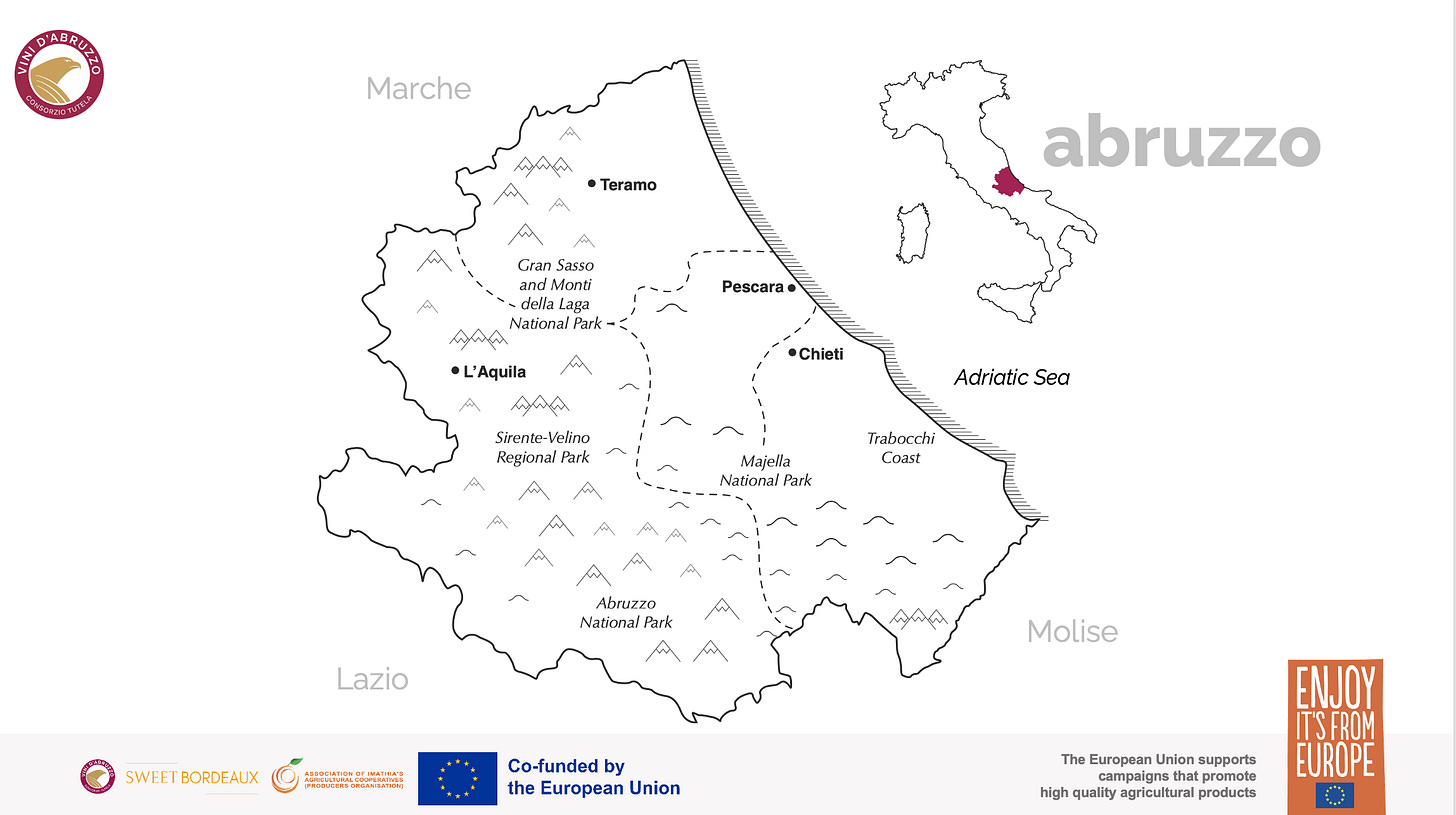
By the way, I wanted to include lots of photos so you could really get a visual feel for Abruzzo. So you’re probably going to need to read this one on the Substack app or website rather than in email. ;)
Day 1: Arrival in L’Aquila
After a few flight delays for some of our group members, we arrived hungry and ready for lunch in L’Aquila and enjoyed our first meal at Antica Trattoria dei Gemelli. We dined on a local selection of salumi and cheeses that were SO good, served with bread and pizza fritta–fried pizza dough you can fill with cheese or salumi, yum! Next came a plate of pasta alla chittara con tartufo, a homemade pasta made with something that resembles guitar strings (hence the name chittara) with a creamy truffle sauce. Apparently, Abruzzo is also truffle territory!
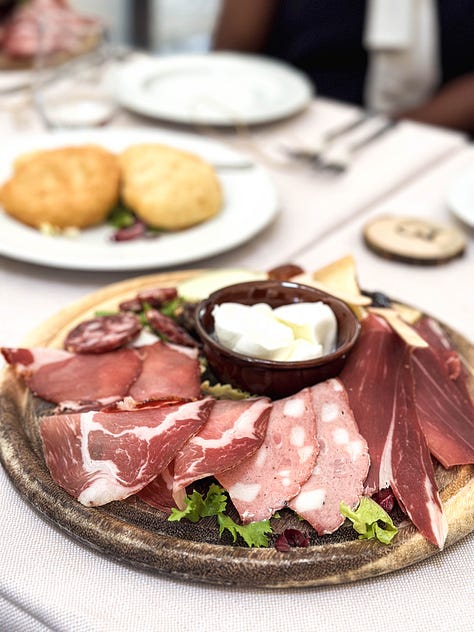
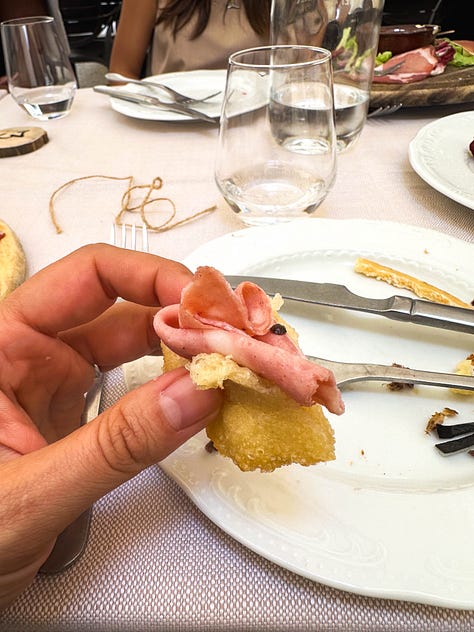
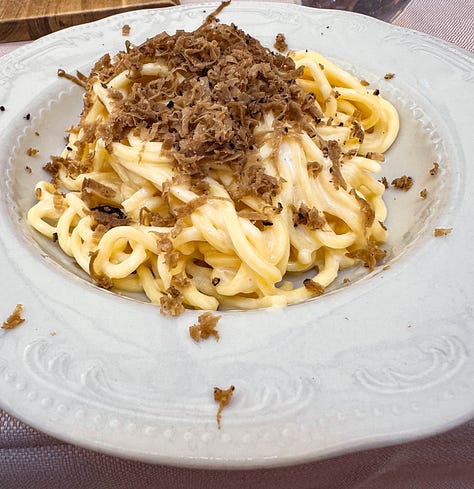
After lunch, we took a tour of the gorgeous town of L’Aquila. Apparently, it’s been ravaged by earthquakes over the years, the most recent one in 2009 that destroyed several structures, including historic churches. They’re still in the process of rebuilding, but L’Aquila is known for its resilience and the town was beautiful nonetheless, especially the Basilica di San Bernardino.
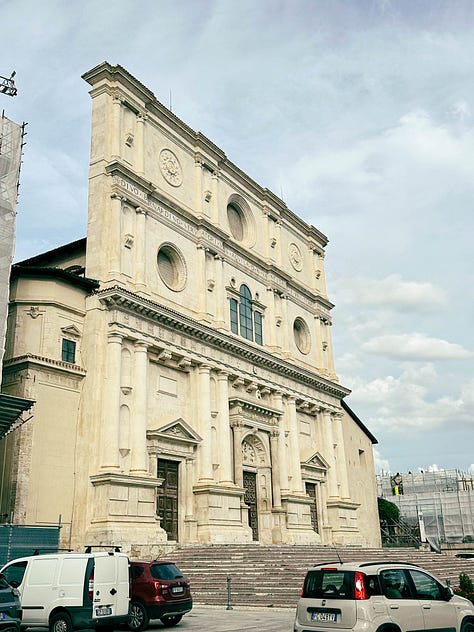
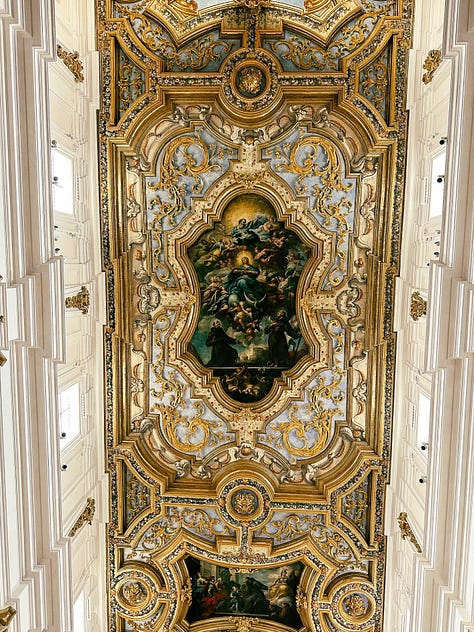
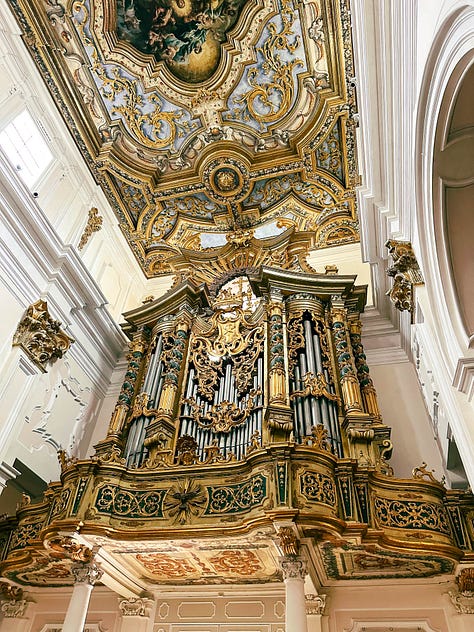
When the tour was over, we headed to Santo Stefano di Sessanio to check into one of the most unique hotels I’ve ever stayed at – Sextantio. It’s known as an albergo diffuso, which means something like a spread out or dispersed hotel. You’re literally staying in a medieval village surrounded by the mountains! They’ve refurbished the living quarters where local workers and artisans once lived. Soaps in the rooms are made from local olive oil, donkey milk, and honey. Beeswax candles burn in the rooms, safely staying lit all night. Wool blankets and bedding are all made locally. Most rooms have fireplaces and I definitely took advantage of mine, as well as modern bathtubs. The food was phenomenal, both dinner and breakfast. You have to stay here if you’re in this area of Abruzzo, it’s such a one-of-a-kind experience. It’s like they’ve preserved a piece of history, taking you back in time, but elevated with some modern luxuries.
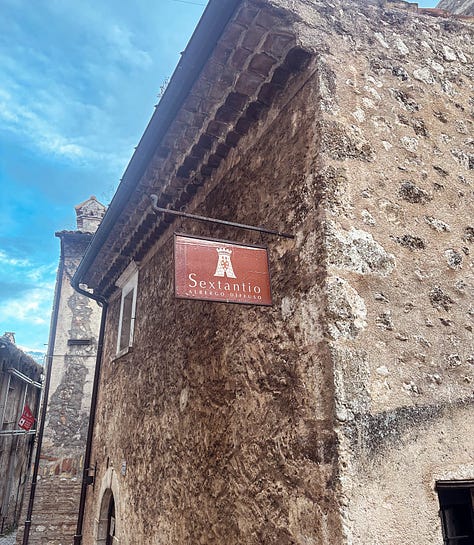
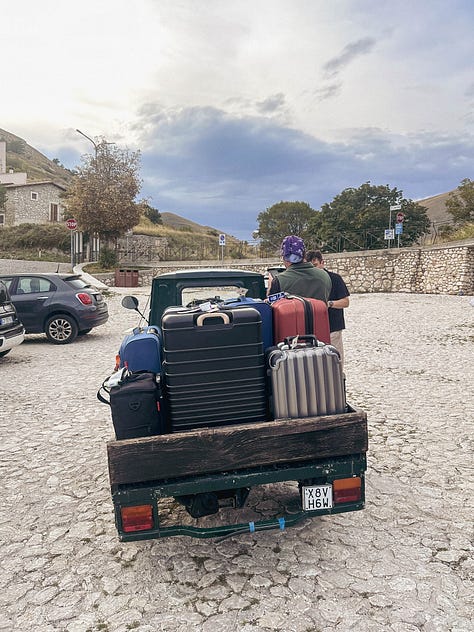
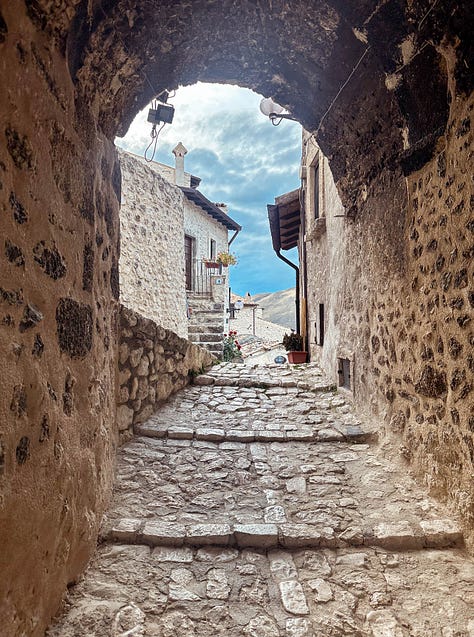
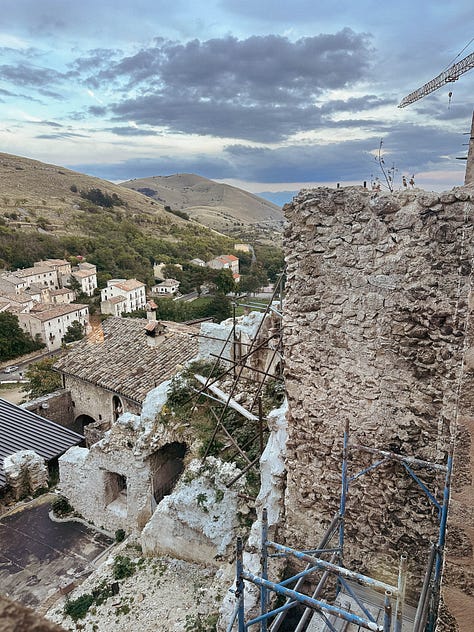
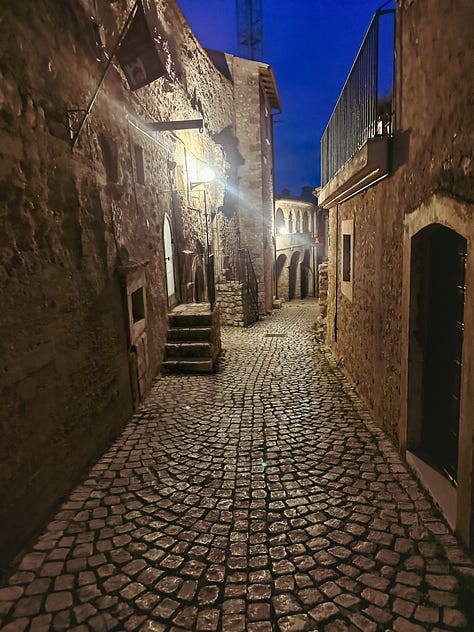
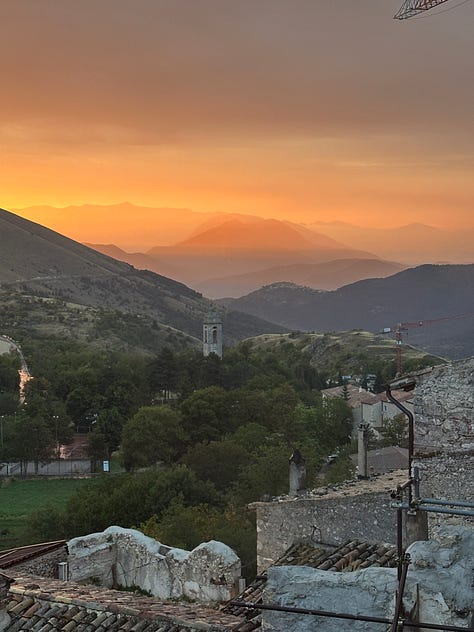
That night, we had a quick masterclass on the wines of Abruzzo hosted by Davide from the Consorzio, followed by a delectable meal: bread and anchovy meatballs with vegetable sauce, pasta with mutton ragù, pork with tomato and sage, and a pizza dolce for dessert.
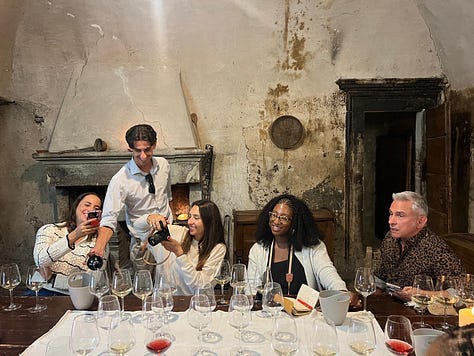
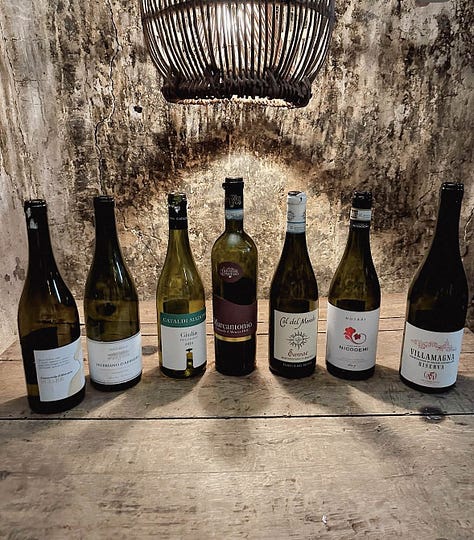
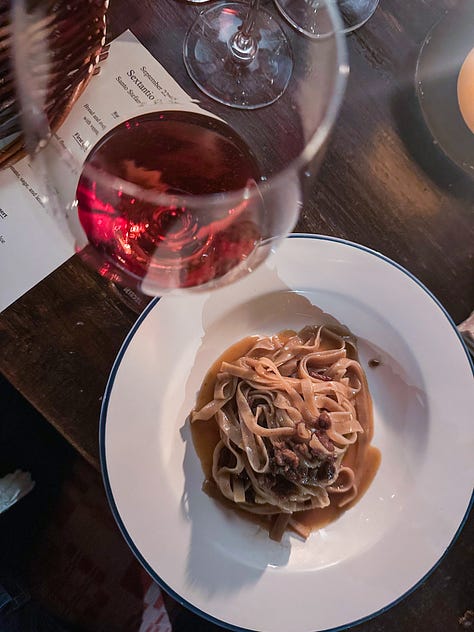
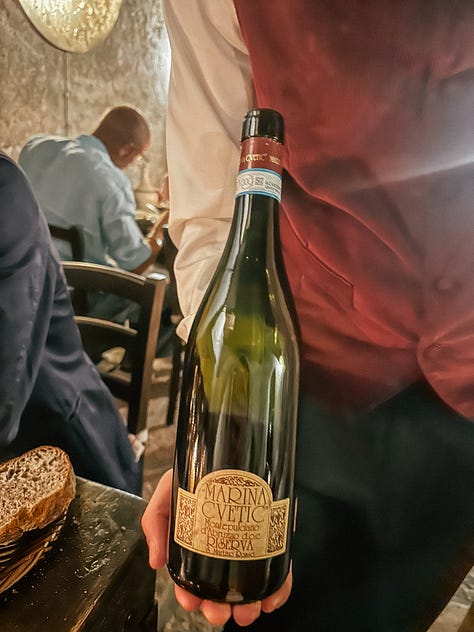
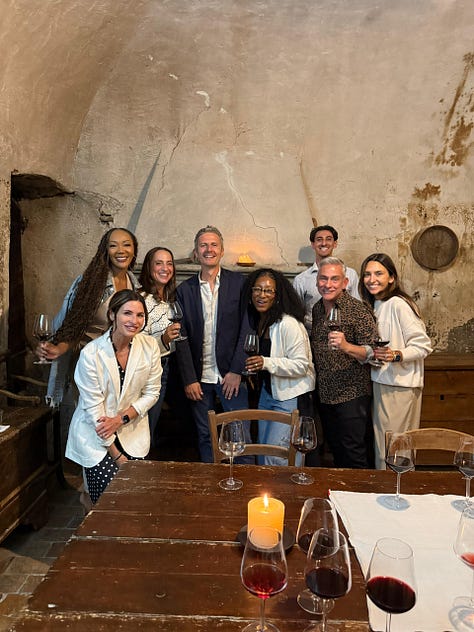
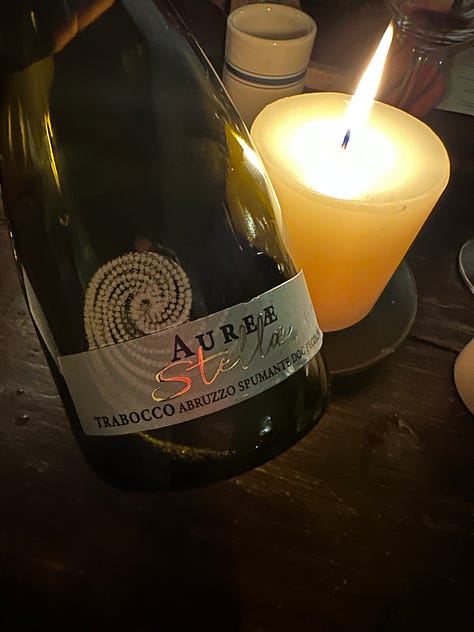
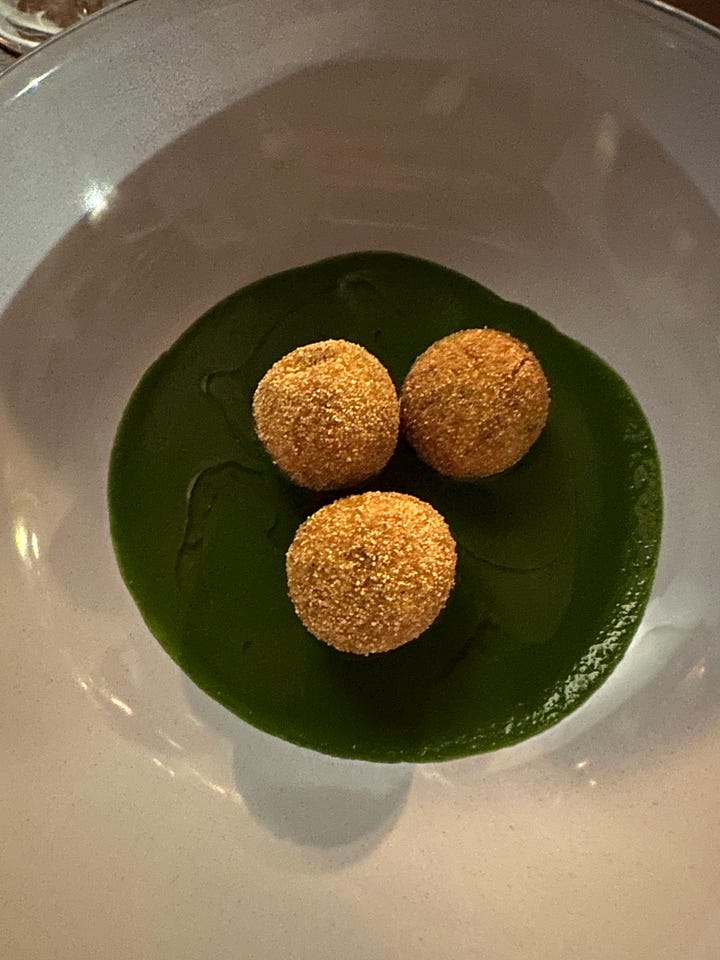
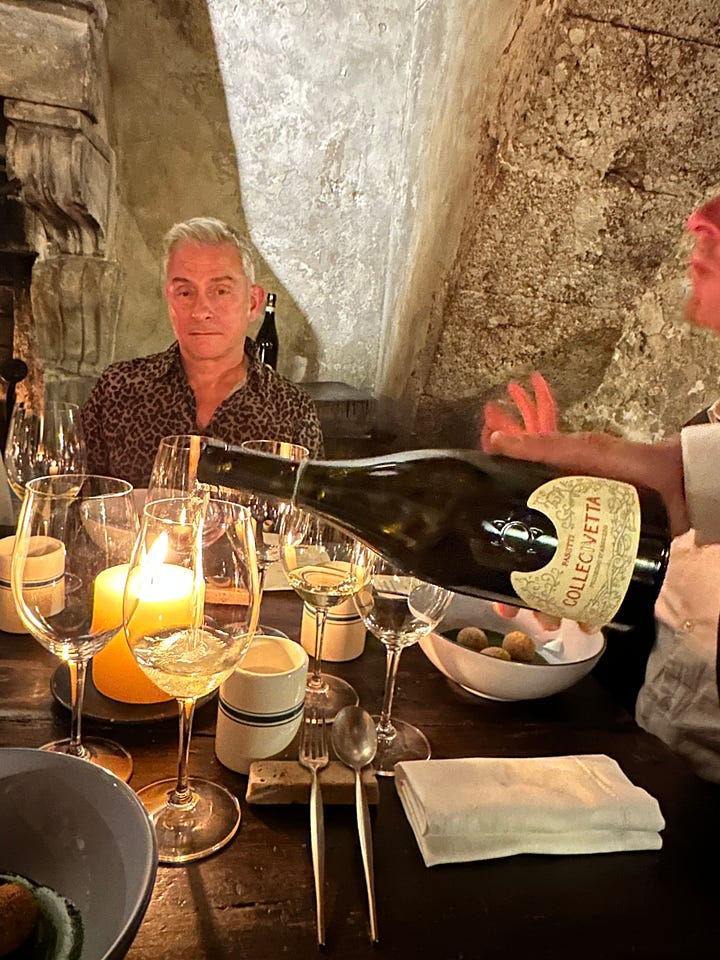
The masterclass wine lineup:
SCIARR Cococciola d’Abruzzo DOC (though I don’t see it on their website)
Valle Reale Trebbiano d’Abruzzo DOC (imported by Winebow so you could likely find it stateside)
Az. Ag. Olivastri Tommaso Marcantonio Cerasuolo d’Abruzzo DOC
Nicodemi Notarí Colline Teramane Montepulciano d’Abruzzo DOCG
The two standouts for me here were the Pecorino and the Villamagna Riserva. My verbatim tasting notes on the Pecorino: Whoa. So beautiful!! Orange blossom. Salinity. Orange peel. Apricot marmalade. Big body though. Super juicy on the palate with the acidity. Lots of Meyer lemon and salinity in the palate. 10/10. Really love it.
Day 2: From L’Aquila to the Trabocchi Coast
We kicked off the second day with a morning of adventure!
Hike at Rocca Calascio Castle
Our day started with rain, but the views were stunning and it was so worth getting a little wet.
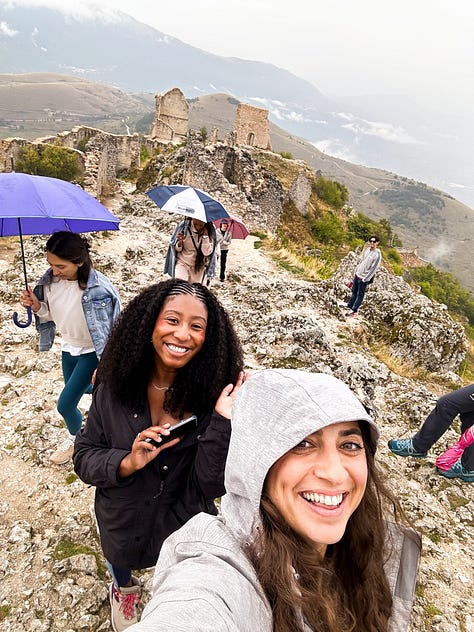
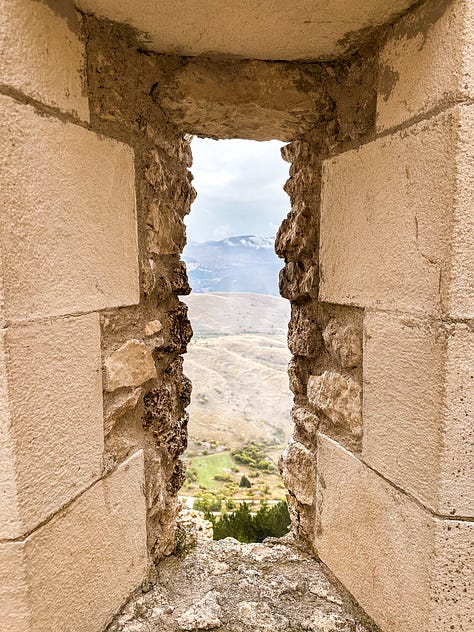
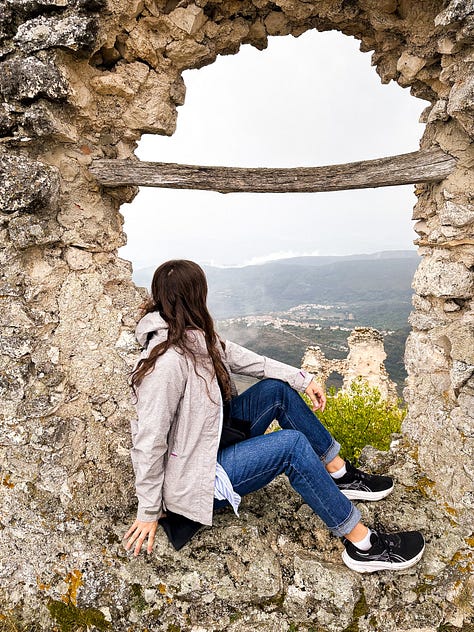
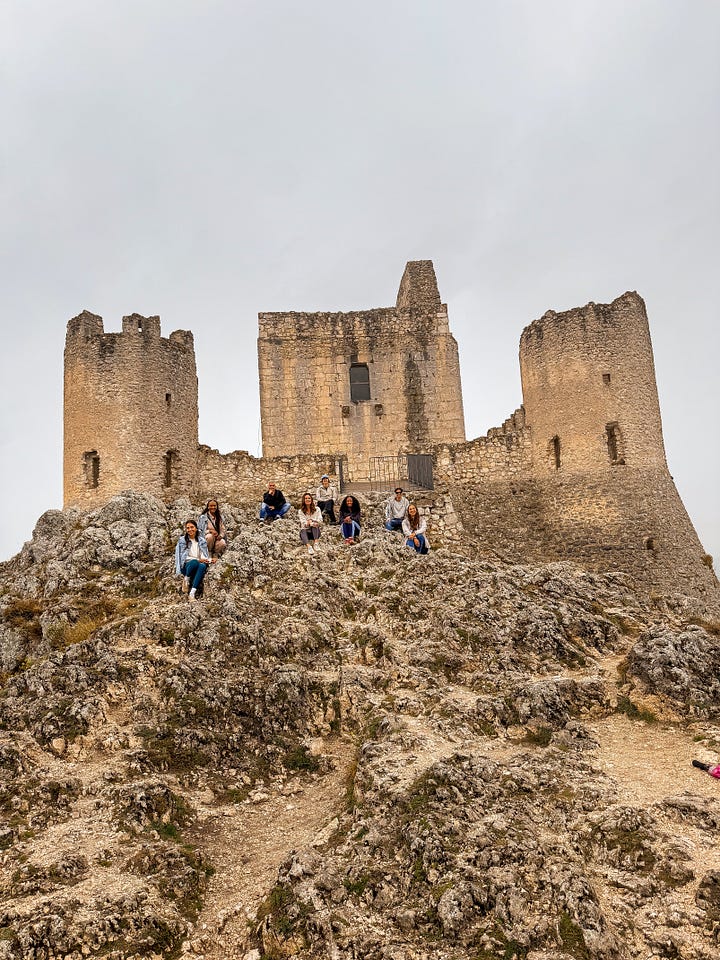
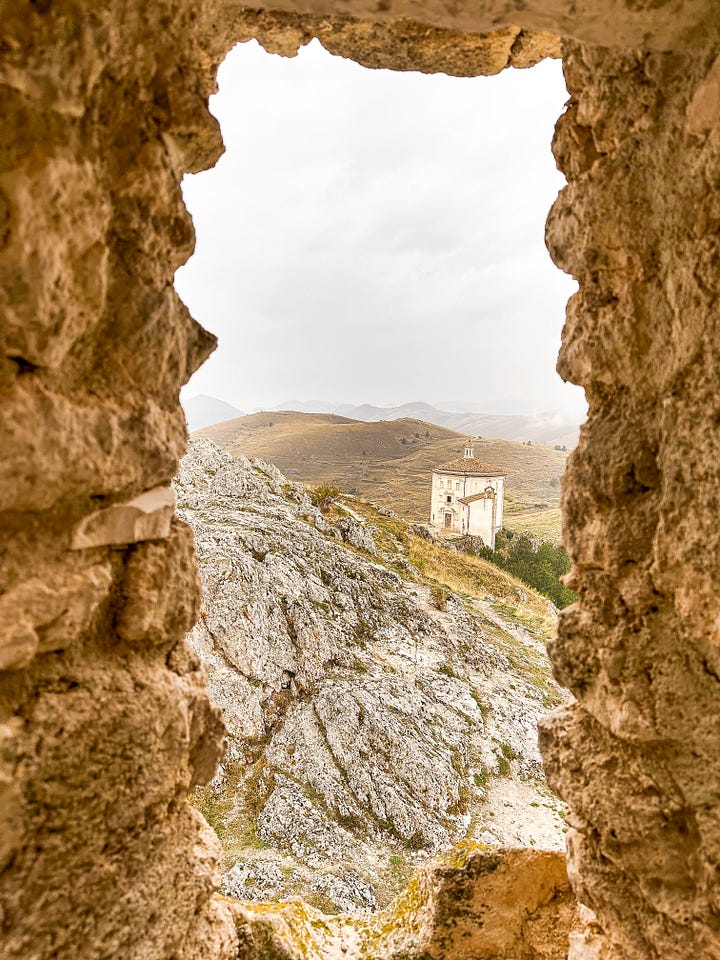
Rocca Calascio is a mountaintop fortress (a rocca) perched at 1,450 meters, the highest in the Apennines. It’s located in Calascio in the L’Aquila province, the perfect starting point for an Abruzzo adventure. On the trek up, we enjoyed views of the Gran Sasso-Laga National Park. With fog rolling in over the valley, it was a truly cinematic panorama.
Fun fact: medieval fortresses in Abruzzo communicated using fires at night and mirrors in the sun to warn each other of danger.
Canoe Trip on the Tirino River
Beside the Abruzzo wine exploration, canoeing on the Tirino River with Il Bosso was my favorite activity of the week!
About the Tirino:
Always 10*C year round (the water comes from within the surrounding mountains)
Trout is the only fish in the river
It glows bright blue and green under the sun thanks to the plant life below the surface
Famous for its exceptionally clear, pure waters (you can see right through it!)
Also located in Gran Sasso and Monti della Laga National Park
Can’t recommend Il Bosso enough! Book with them for a memorable experience. We laughed, we learned, and even had the most peaceful, meditative journey back downstream as we headed back in silence to be immersed in the moment.
Castorani Winery for Tasting & Lunch
After we worked up an appetite, we arrived at Castorani Winery, greeted by stunning views of their vineyards and gorgeous estate. Podere Castorani spans about 100 hectares of organic vines, where old Montepulciano grapes thrive in the bold Abruzzo terroir. We even saw the Montepulciano grapes arriving from harvest, destined for a unique appassimento-style wine, which later wowed us with its concentrated flavors. The winery is part of the Casauria DOCG, a newer designation pending EU approval that showcases wines that truly capture Abruzzo’s natural beauty. This estate was revived by F1 driver Jarno Trulli, who brought his own passion and precision from the fast lane to the vineyard.
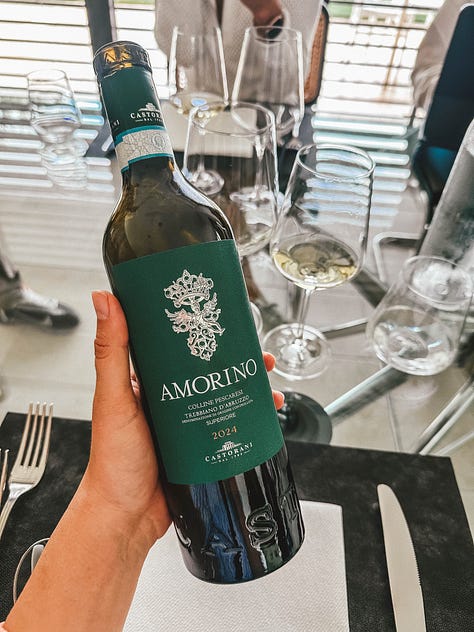
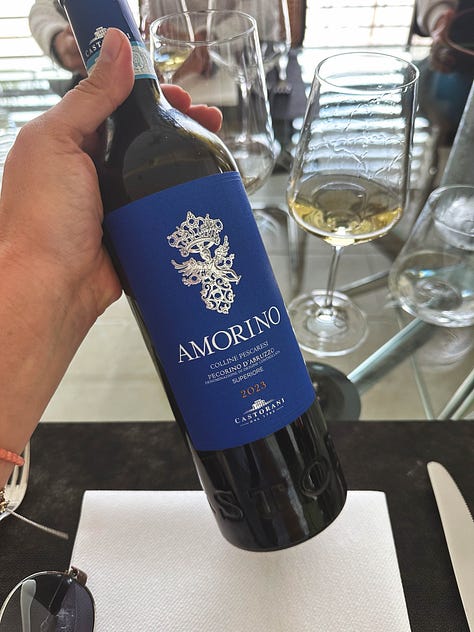
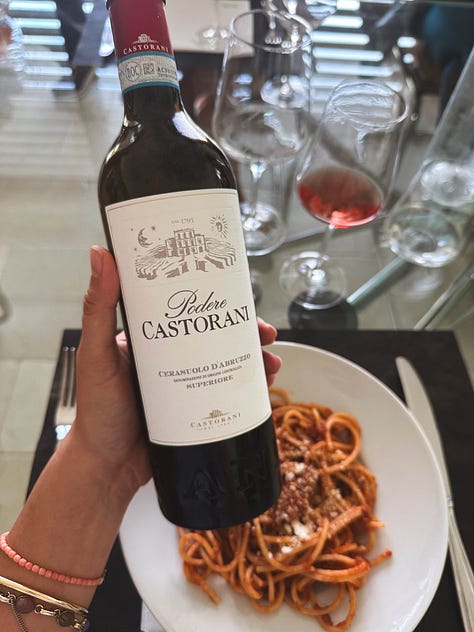
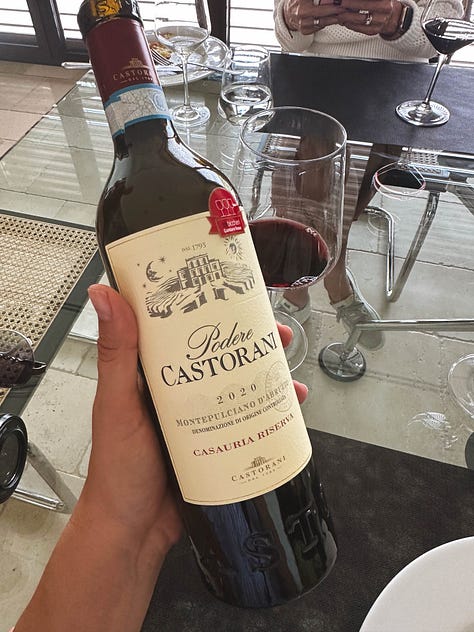
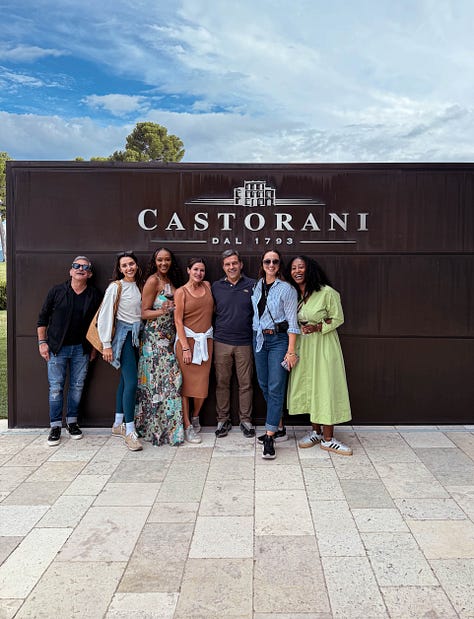
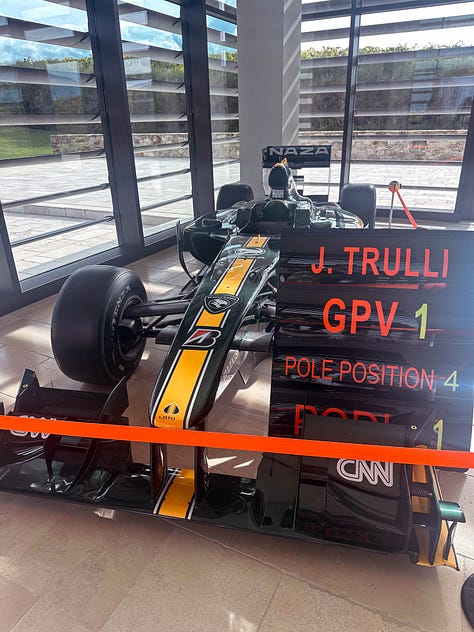
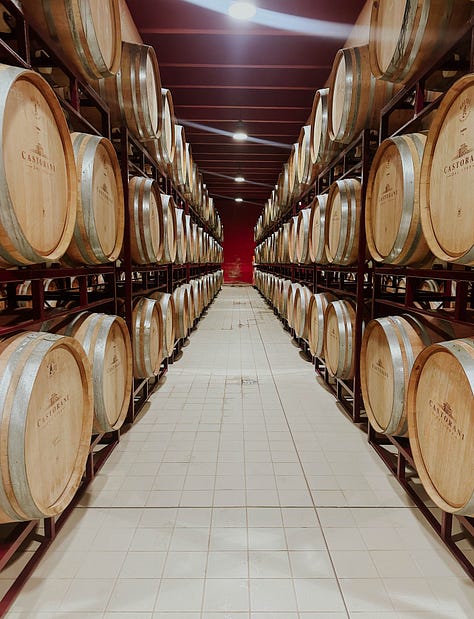
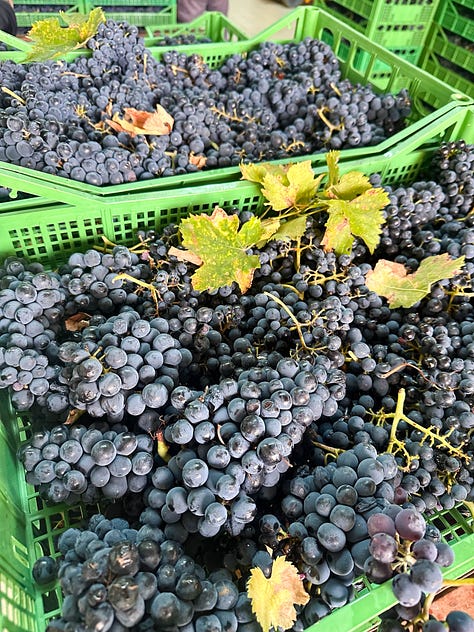
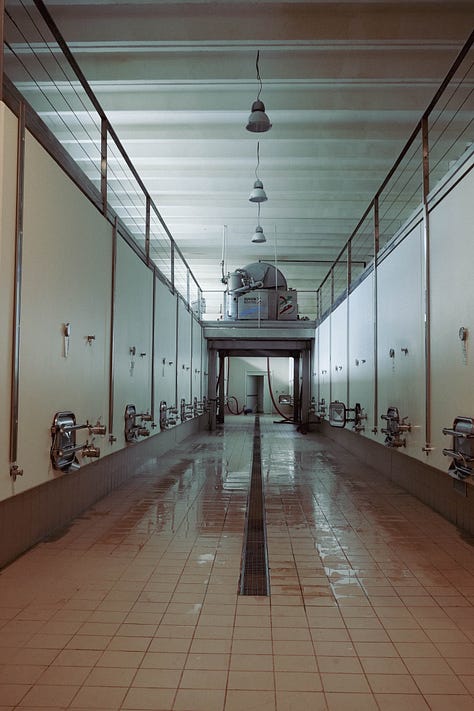
My favorite wines from the tasting:
Amorino Colline Pescaresi Trebbiano d’Abruzzo DOC Superiore: Really lovely. Great body. Salinity. Flint or firestone/pietra focaia. Nice persistence. Nuttiness on the nose. This would age really well.
Amorino Colline Pescaresi Pecorino d’Abruzzo DOC Superiore: So fresh. More aromatic. A little more jasmine, Meyer lemon. Salinity. Great texture.
Podere Castorani Montepulciano d’Abruzzo DOC Casauria Riserva: More elegant. Dark red fruits. Hints of spice and smoke from the barrel aging. Balanced tannins. Nice fruit concentration behind the wood.
Tasting at Zaccagnini Winery
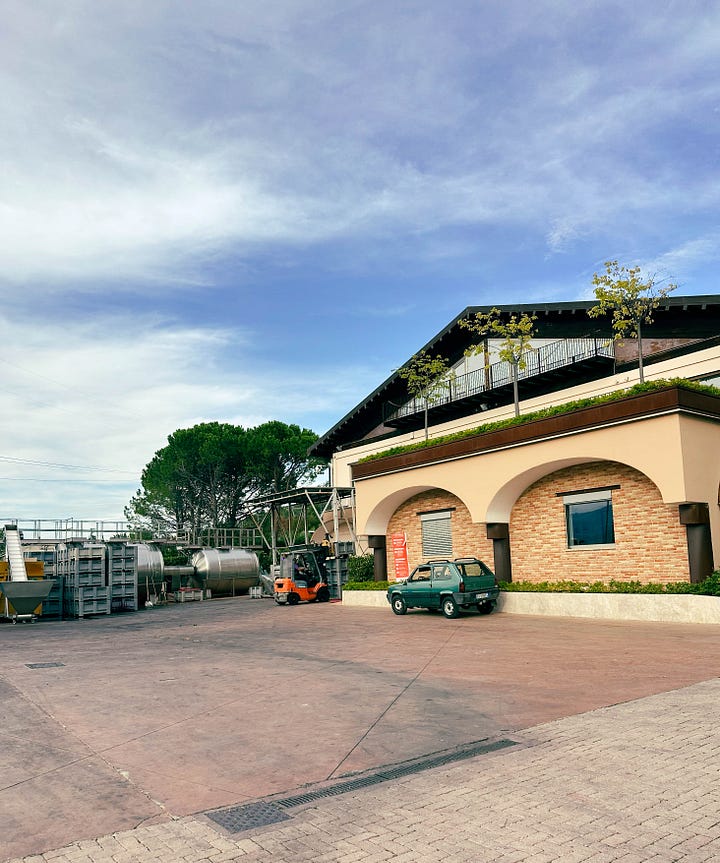
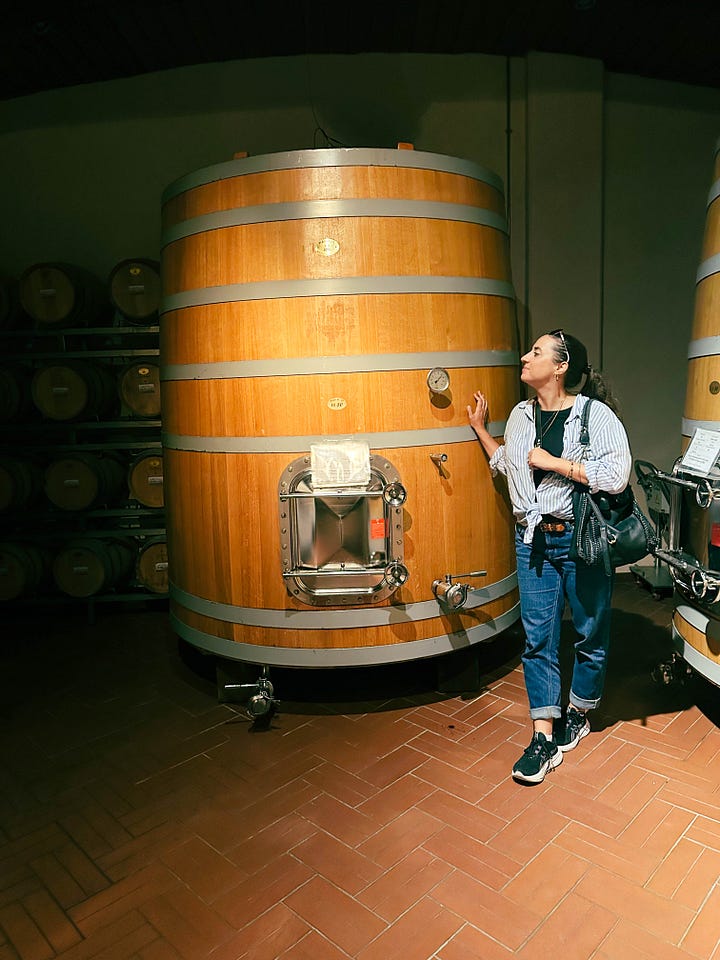
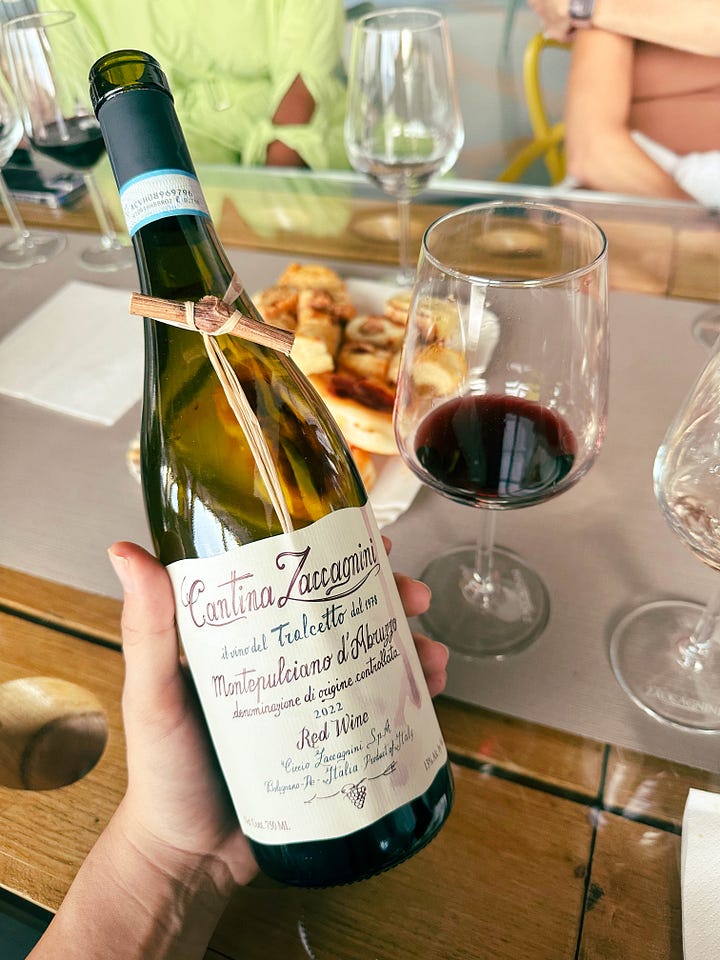
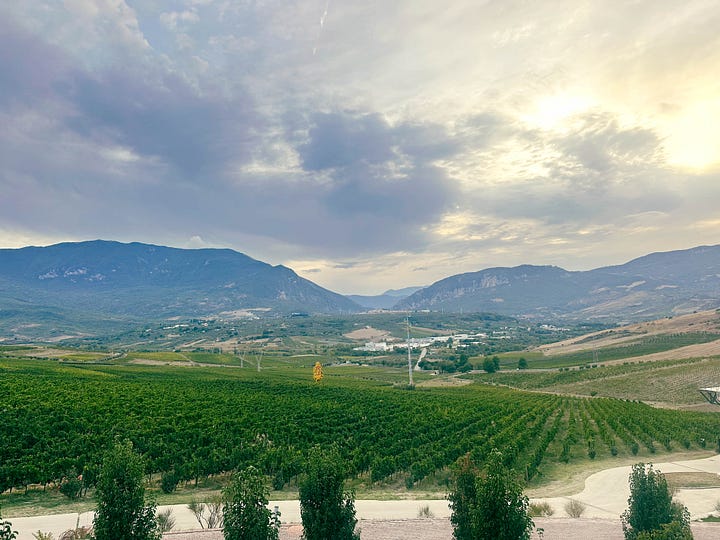
Founded in 1978 by Marcello Zaccagnini in the hills of Bolognano, Zaccagnini sits in a region where Montepulciano vines have long thrived. Their motto, “Wine, art of man,” is more than a slogan, it’s a philosophy. The winery doubles as an art gallery, showcasing works by artists like Beuys, Paladino, and Bassiri, blending creativity and viticulture in every bottle. Every bottle of their signature line is finished by hand with the signature tralchetto (piece of a vine cane), a small touch of craftsmanship in every pour.
Dinner at Trabocco Punta Cavalluccio in Rocca San Giovanni
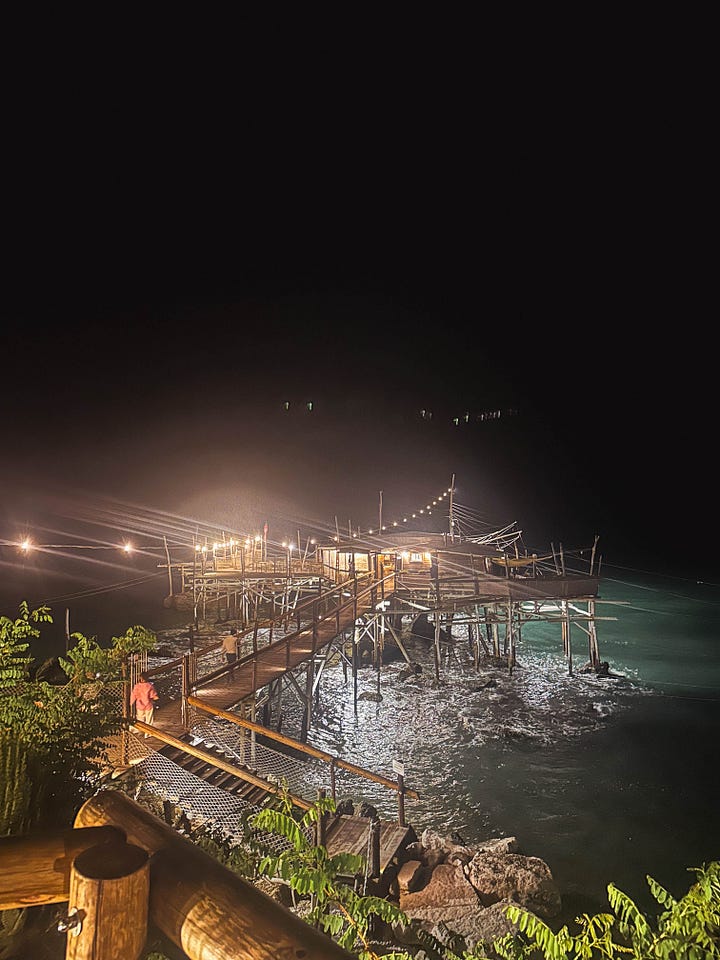
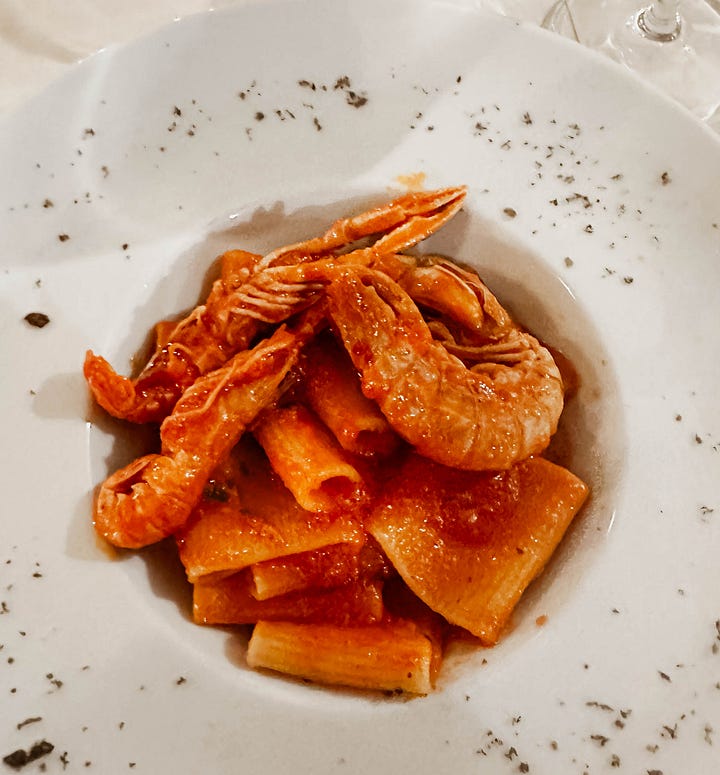
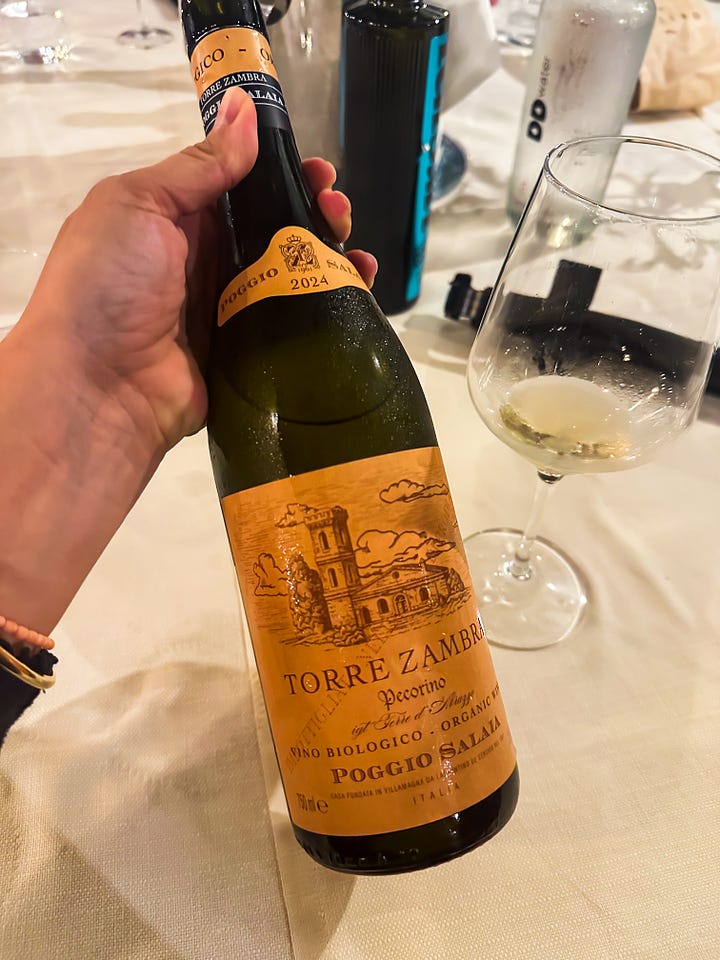
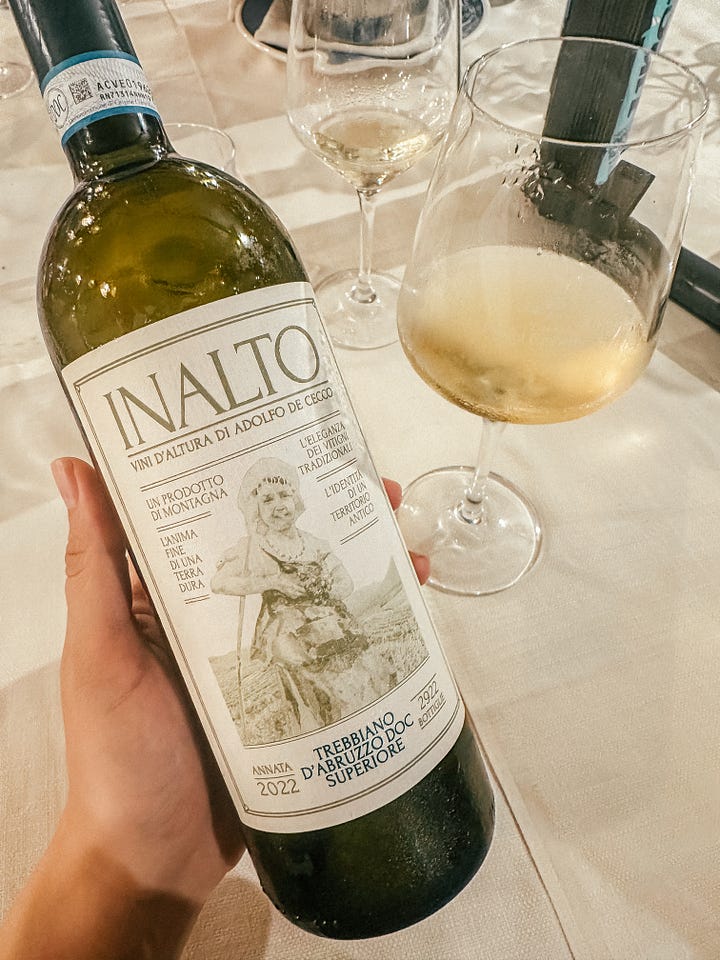
We rounded out day 2 with dinner at Trabocco Punta Cavalluccio, dining on a multicourse menu of fresh seafood and savoring several bottles of local wines. Two of which ended up being fan favorites.
Torre Zambra Pecorino d’Abruzzo DOC: Explosive aromas! Peach, white nectarine, salinity, orange peel, tangerine, minerality. Fuller bodied. Nice concentration. Super fresh with an oily texture.
Inalto Trebbiano d’Abruzzo DOC Superiore: Bay leaf, aromatic herbs, peach, candied citrus, a kiss of smokiness. Another stunner.
By the way, a trabocco is a type of piling structure that hovers over the sea on stilts. Traditionally, they were used by fishermen and today some house restaurants and bars. They’re all over the Trabocchi Coast.
Day 3: More Adventures in Wine
Bike Ride Along the Trabocchi Coast
Day 3 began with an absolutely beautiful bike ride along the Trabocchi Coast. This Adriatic gem stretches 40 km between the towns of Ortona and Vasto. Rain was on the forecast, but the wine gods smiled on us and brought out the sun for our adventure! We biked the Green Way, a trail along the former railway that hugs the entire coast.
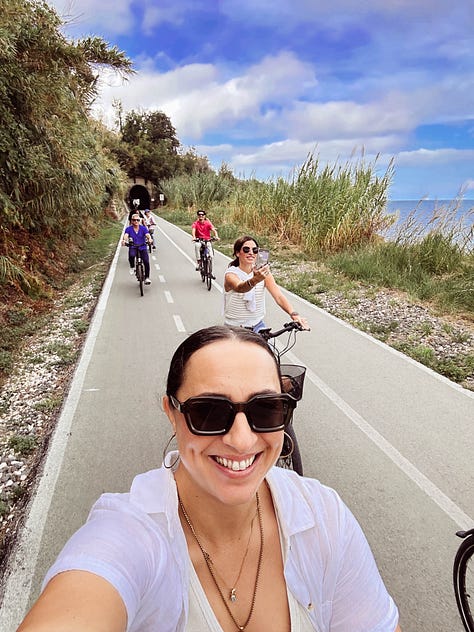
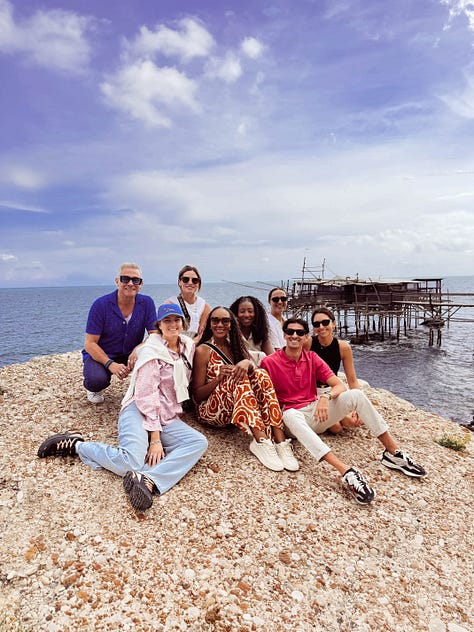
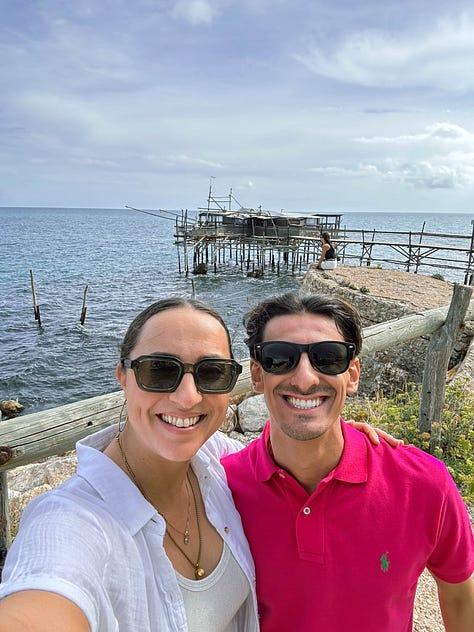
Lunch & Tasting at Fontefico Winery
Our visit to Fontefico Winery for lunch and tasting was truly a highlight of the trip! This family-owned, fully organic estate focuses exclusively on native grape varieties and spontaneous fermentations, producing single-vineyard wines that reflect Abruzzo’s terroir. Founded by three siblings and their parents, their father knew all the best vineyard sites to start with and they now cultivate 15 hectares, producing 50,000–60,000 bottles a year.
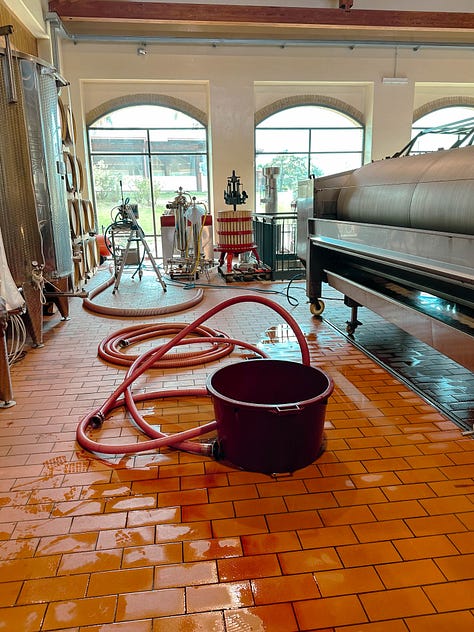
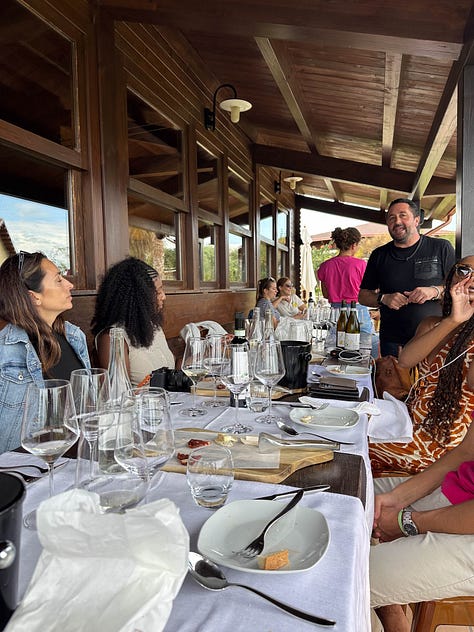
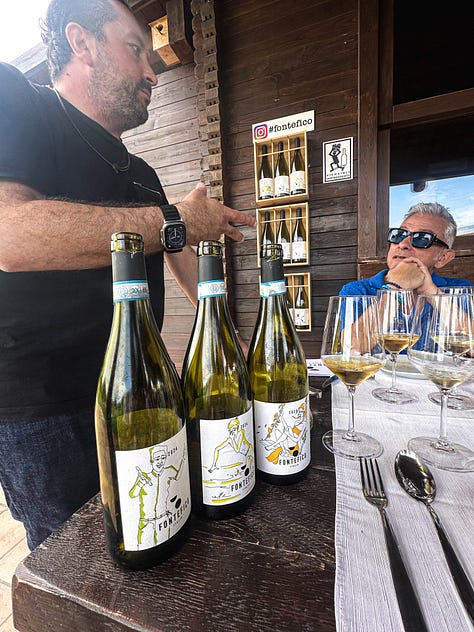
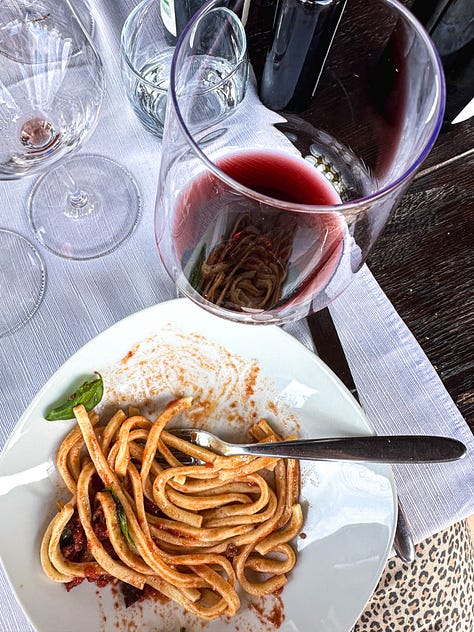
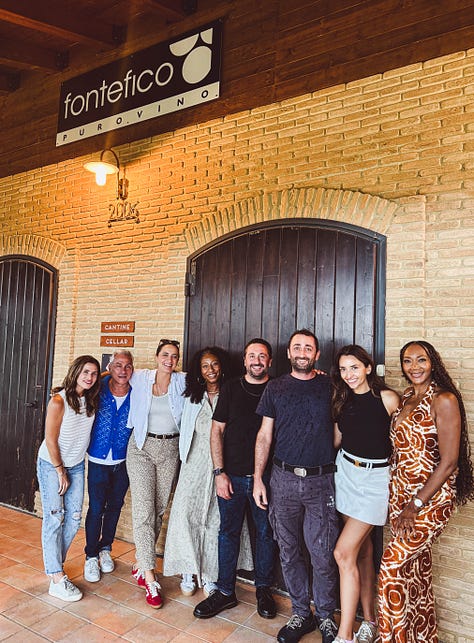
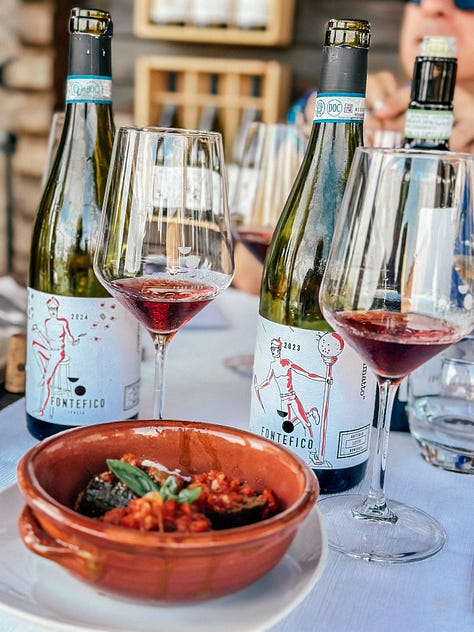
The winemaker, also an artist, designs each label, giving every wine its own character and evolving story with each vintage. Hospitality was warm, the passion palpable, and the wine did not disappoint. Lunch, featuring local cheeses, charcuterie, roasted veggies, pasta with ventricina salsiccia, and arrosticini, made the experience even more unforgettable.
I have lots to share with you on their wines in an upcoming newsletter!
Tasting at Jasci e Marchesani Winery
At Jasci & Marchesani, organic farming isn’t a trend, it’s a legacy. Among the first wineries in Abruzzo to achieve organic certification in Italy, their philosophy has long centered on respect for nature and sustainability. The story is also a love story: Nicola Jasci met his wife Federica while studying agronomy at university; she later earned a degree in enology, and together they now run the winery with both scientific precision and heartfelt passion. The cellar sits 500 meters underground, powered entirely by solar energy, producing around 400,000 bottles per year with an impressively light footprint.
The family transitioned from concrete to stainless steel tanks to maintain pristine conditions suitable for their modern approach to minimal intervention winemaking. Their range celebrates both native and international grapes: crisp Pecorino, zesty Trebbiano, aromatic Traminer and Riesling, and classic Montepulciano.
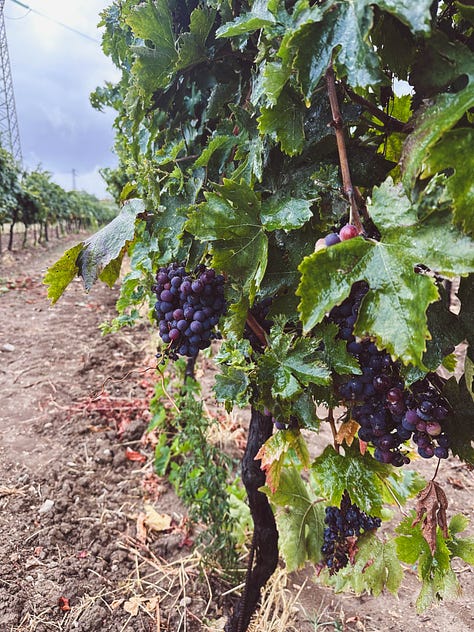
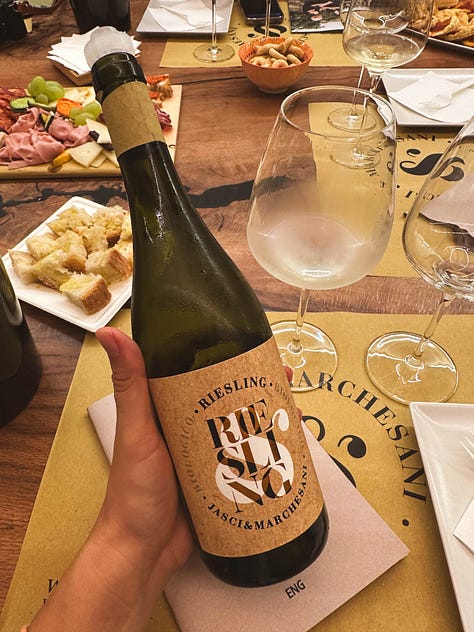
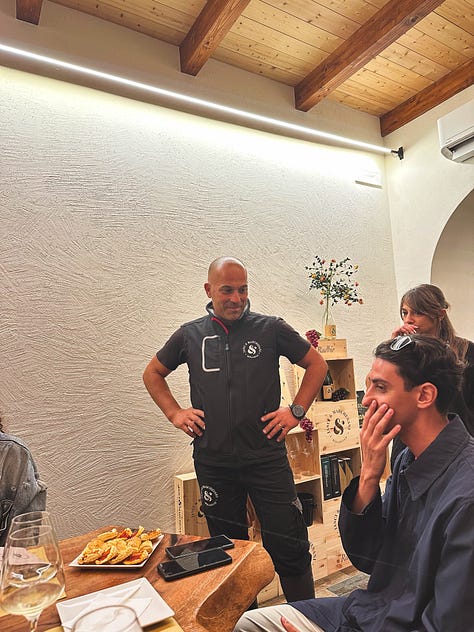
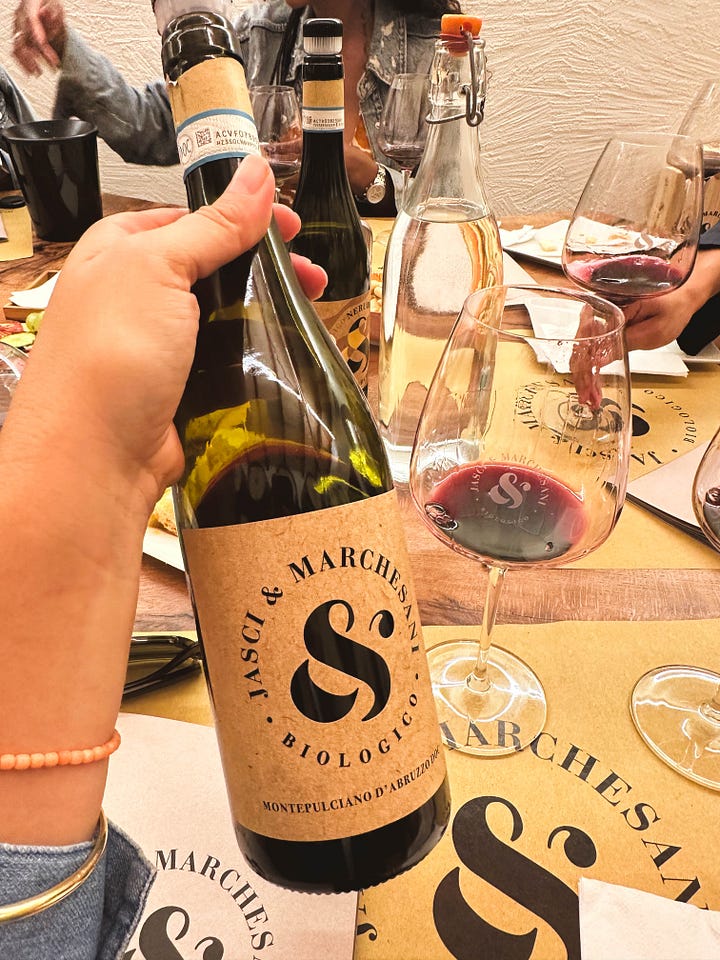
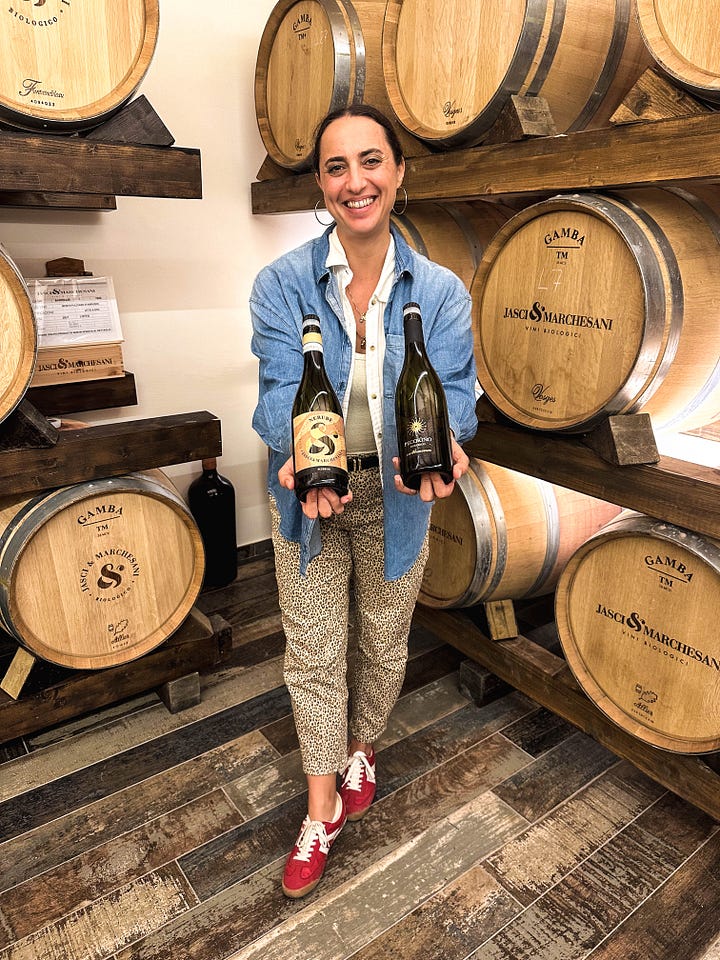
Highlights from the tasting included a Pecorino 2025 tank sample that was briny and electric with notes of lemon, banana, and sea breeze. Whereas the 2024 Pecorino was juicy and pear-driven with coastal salinity, and a Cerasuolo 2024 (100% Montepulciano) was vibrant with tart cherry, sweet fruit, and a pleasantly bitter finish.
Brodetto for Dinner at Trattoria Da Ferri
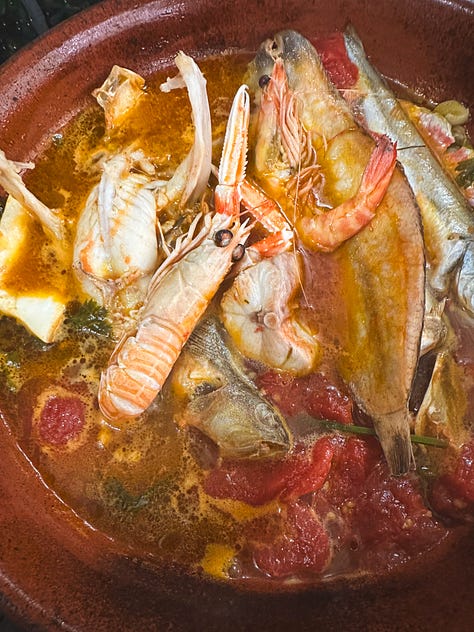
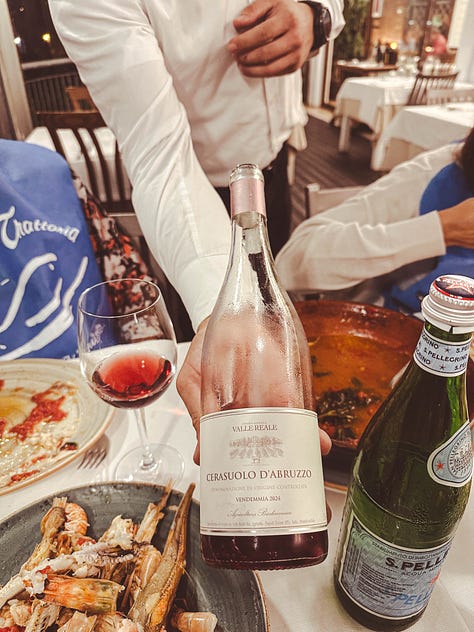
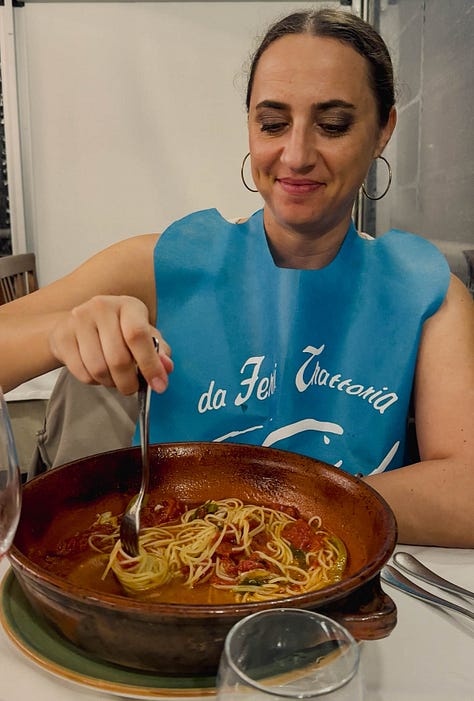
We ended a jam-packed day with a satisfying meal at Trattoria Da Ferri where we experienced brodetto! This was truly a one-of-a-kind dish that’s typical of the Vasto region in Abruzzo. It’s basically a massive fish soup with four different kinds of fish, prawns, squid, and mussels, cooked in a broth with tomatoes, celery, parsley, and other aromatics. The brodetto arrives at the table still boiling in a big clay bowl. Once you eat all of the seafood, the servers come by with pasta to add to your broth so you can enjoy the rest! This was such a delicious meal and a complete experience with bibs and all. Also, brodetto is the perfect match for Cerasuolo d’Arbuzzo, which has the body, structure, and freshness to complement a flavorful tomato-based broth with fresh seafood.
Day 4: Wine Tastings, Nature & Back to Rome
Wine Tasting at Feudo Antico
Our final day began at Feudo Antico in Chieti. Feudo Antico is a fascinating project born from Cantina Tollo, Abruzzo’s first cooperative winery and a true pioneer in the region’s post-war revival. When work began on the estate in 2013, the team made an extraordinary discovery: the remains of a Roman villa, complete with amphorae (dolia), cisterns, and even the ancient stonework where grapes were pressed over 2,000 years ago.
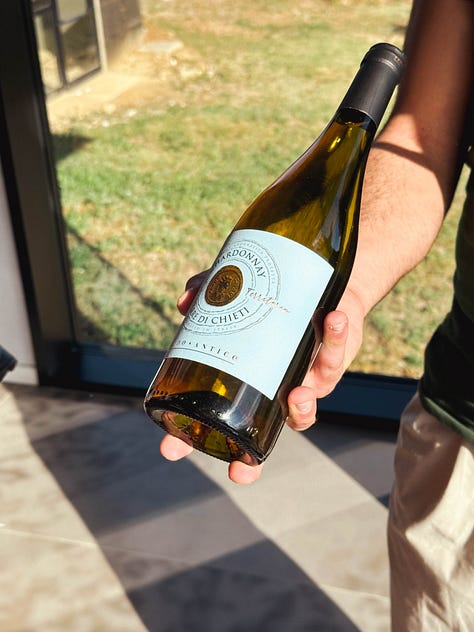
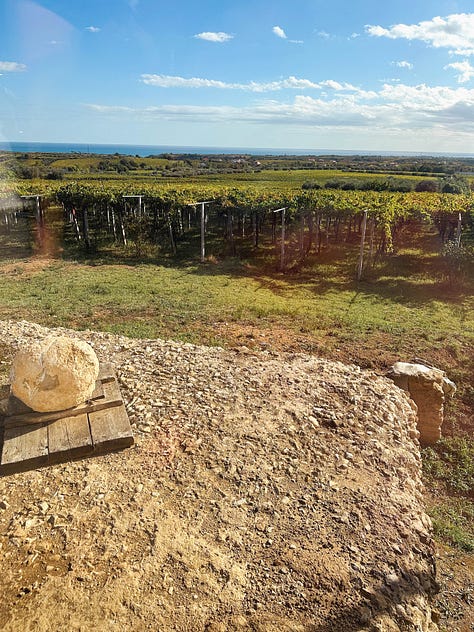
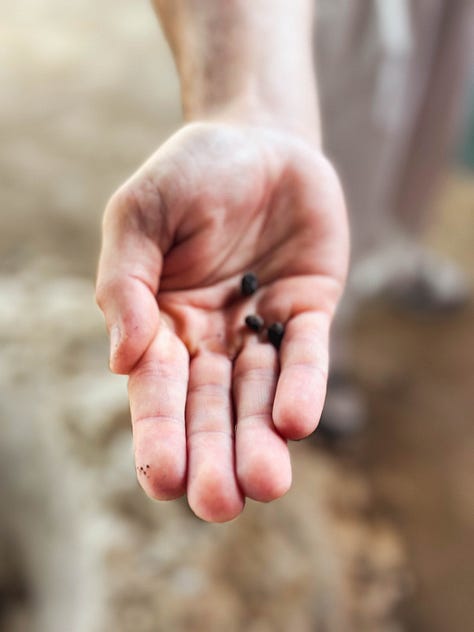
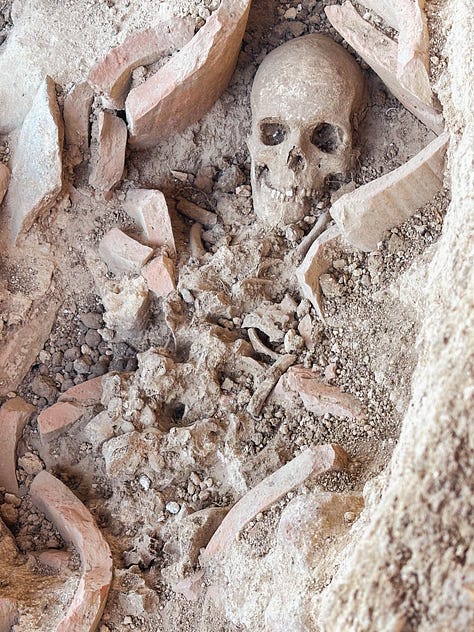
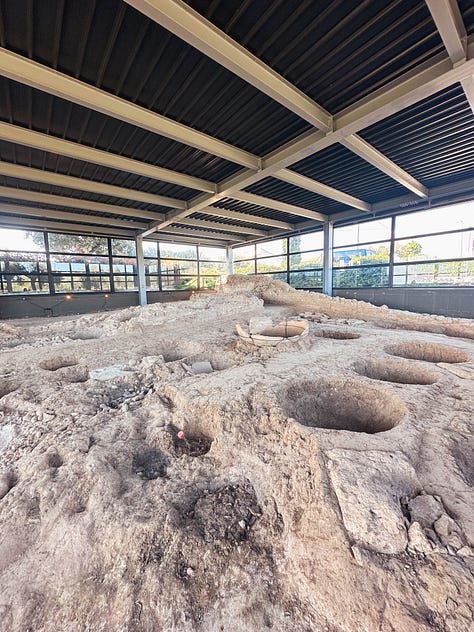
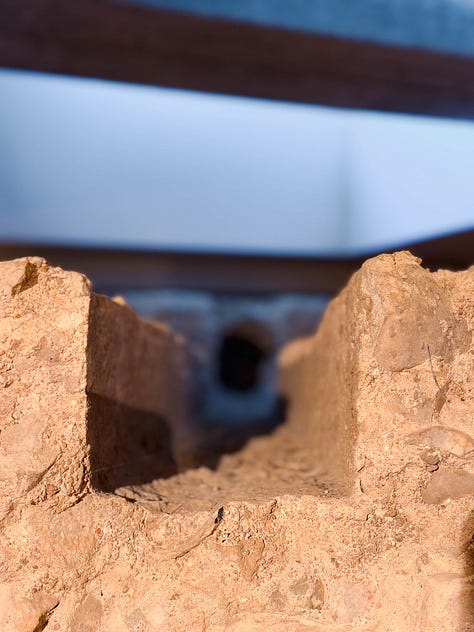
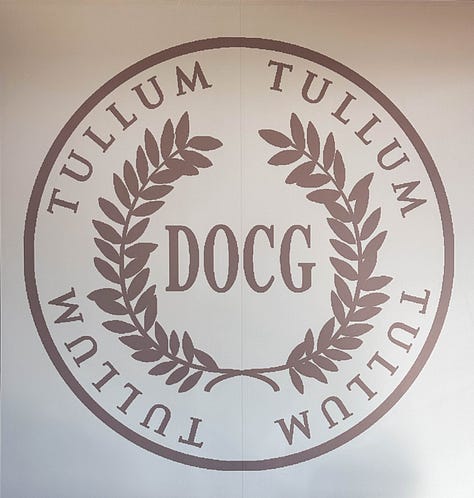
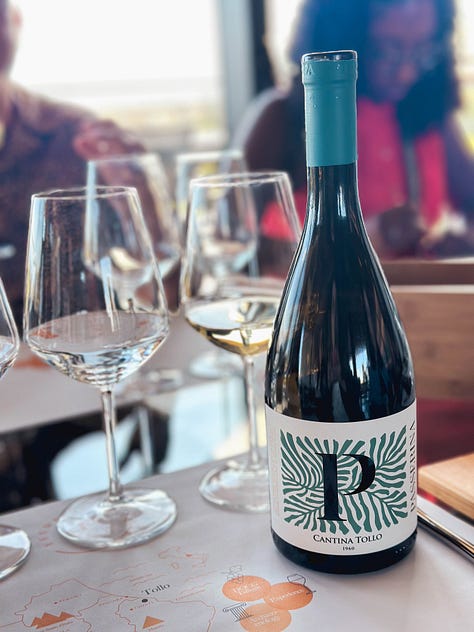
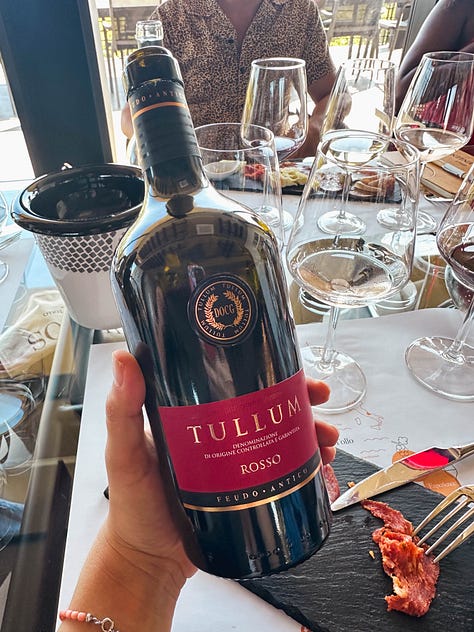
Excavation and restoration continued for years, leading to the winery’s opening in 2020, with vineyards first planted in 2018. The site even revealed the skeletons of a young couple, a poignant reminder of the land’s deep human history. Today, Feudo Antico’s production includes the Tullum DOCG, one of Abruzzo’s most prestigious, newest, and smallest appellations.
As part of the Cantina Tollo cooperative, which now unites over 550 growers across the region, Feudo Antico bridges past and present, honoring ancient roots while crafting vibrant, terroir-driven wines. We tasted through Cantina Tollo wines, too, and the Passerina, from the vigneto avanzato project, stood out for me: bright, saline, and citrus-laced, with notes of lemon verbena, orange peel, and lime, offering freshness and depth that beautifully capture the spirit of modern Abruzzo.
I found the wines from the vigneto avanzato project very interesting. Often there’s a perception that cooperative wineries produce lower quality wines due to volume, working with numerous growers, etc. Cantina Tollo’s vigneto avanzato project pays growers by hectare rather than by weight/volume of grapes they bring in. They only work with select growers in this way and it’s usually with older vineyards. The focus is on quality cultivation as opposed to higher yields and the results really show in the glass.
I also loved the Tullum DOCG Montepulciano with only 3,000 bottles made. This wine was so elegant and balanced with refined tannins and flavors of black cherry, licorice, violet, tobacco, vanilla, and chocolate.
Lunch at +Tosto Gastro Bottega in Atri
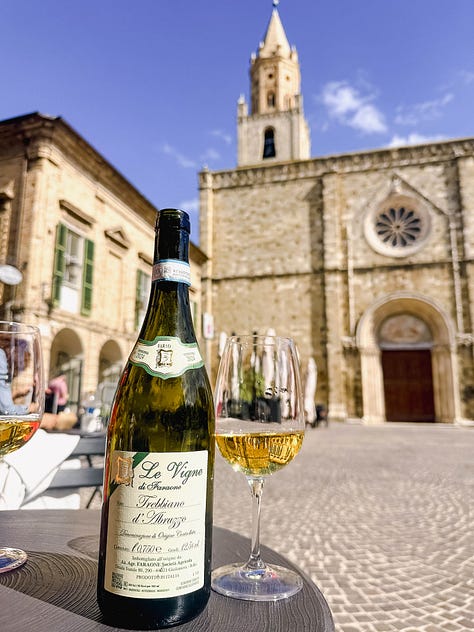
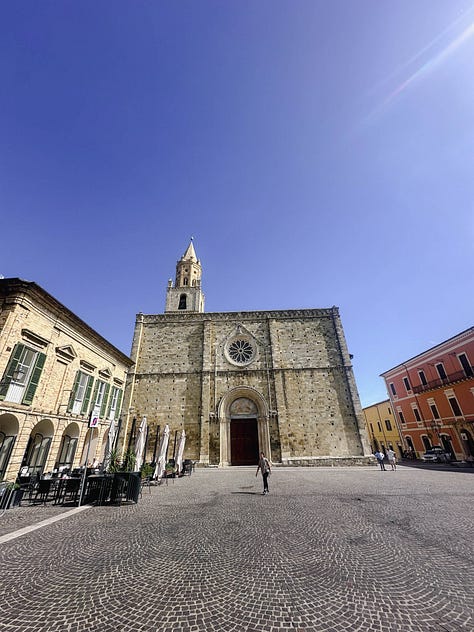
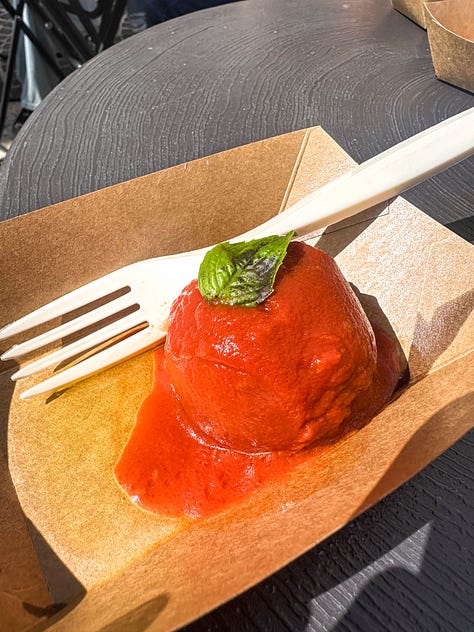
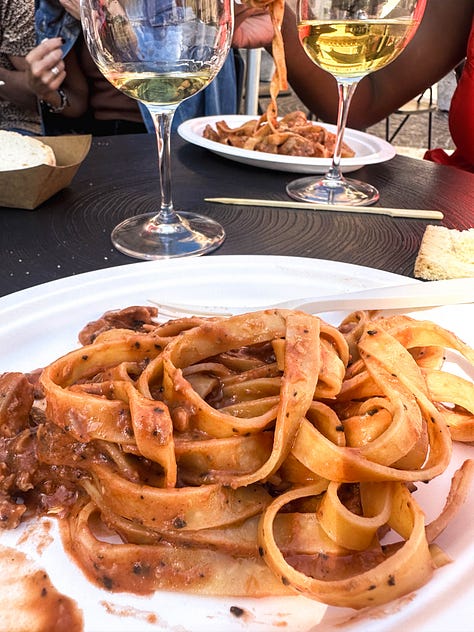
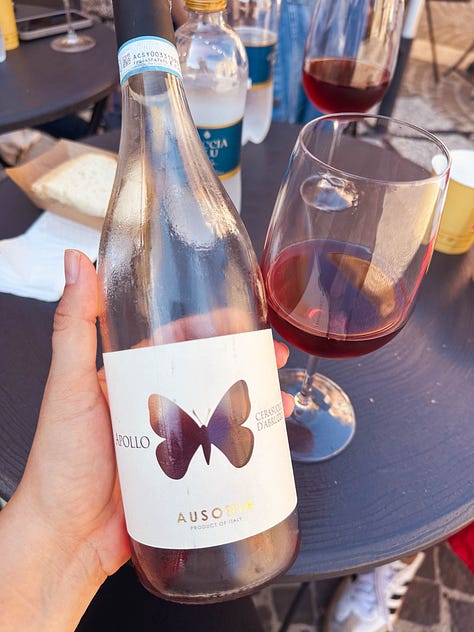
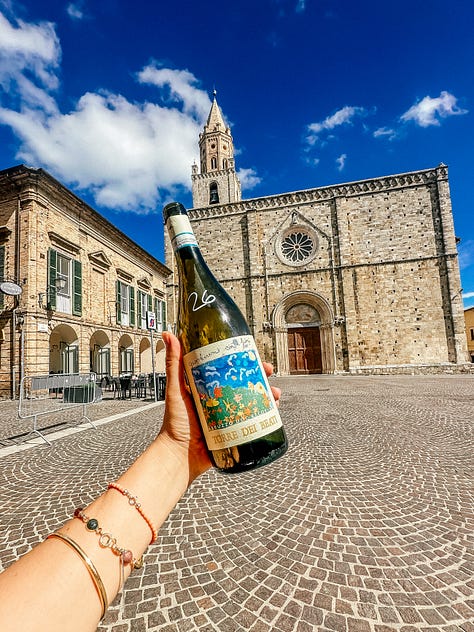
We stopped in Atri to explore a bit and enjoyed lunch at +Tosto Gastro Bottega right in the piazza. In addition to a great selection of wines with more standouts from the trip, we savored olive ascolane, pallotte cacio e ova (egg & cheese balls), and pasta with local mushrooms and truffles. The wines:
Terre de Beati Giocheremo Pecorino Abruzzo DOC (a favorite of the trip that you can only purchase direct from the winery)
Visit Calanchi Natural Regional Park in Atri
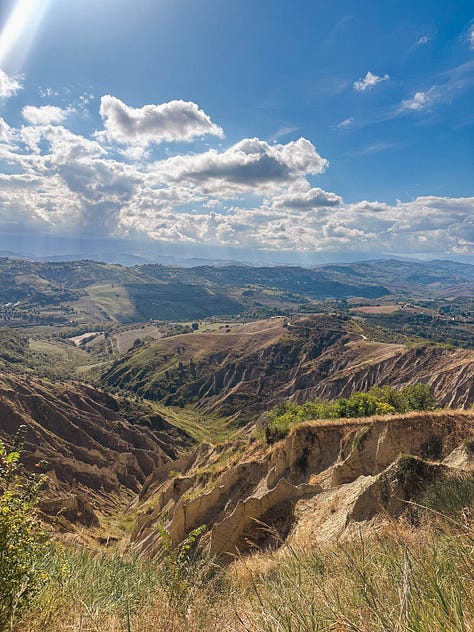
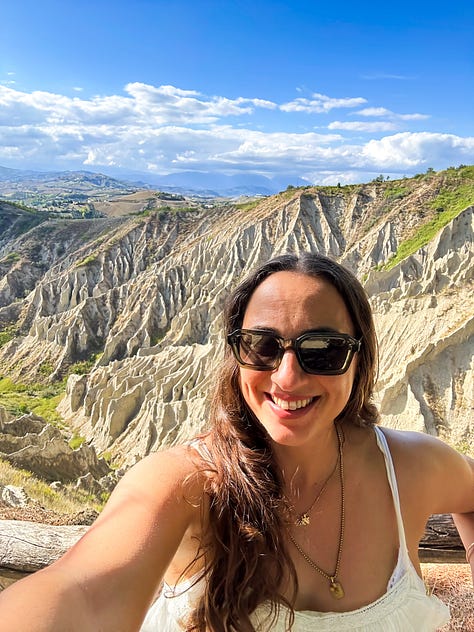
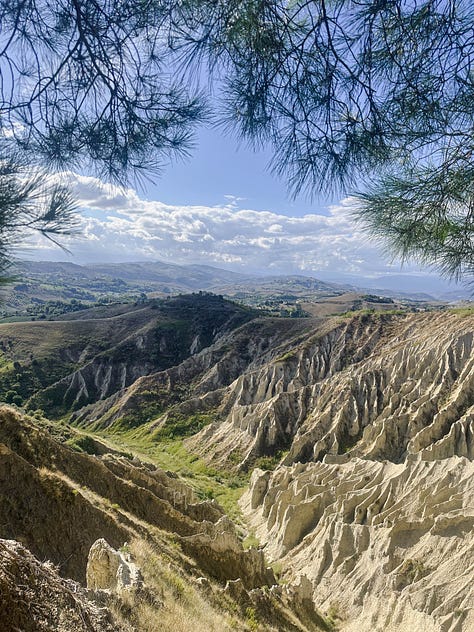
Before our final winery visit, we went to explore the Calanchi Regional Park in Atri, a striking landscape of natural “badlands” shaped by erosion over millions of years. Once submerged beneath the sea, the land here is made up of soft sedimentary rocks—limestone, sandstone, and clay—that have been carved by wind and water into dramatic ridges and deep valleys known as calanchi.
The park spans about 600 hectares within a larger 500,000-hectare area of similar terrain across Abruzzo. It’s a fascinating ecosystem where mammals thrive in the valleys, while birds of prey and bats soar along the crests. Different plant species grow at each level, such as lush flora at the valley bottoms and hardy trees and shrubs on the ridges, helping to stabilize the fragile soil and prevent further erosion.
Final Tasting at Abbazia di Propezzano
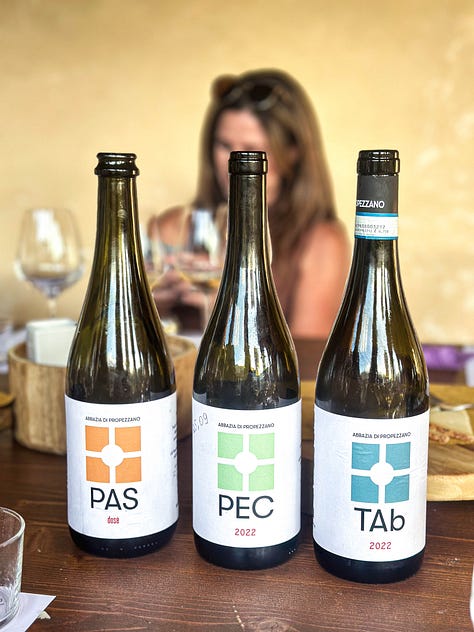
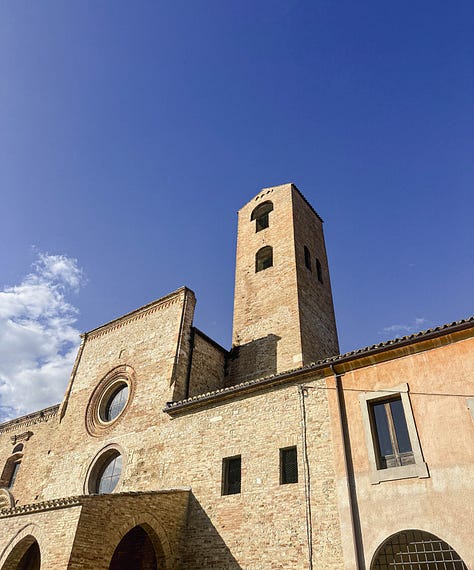
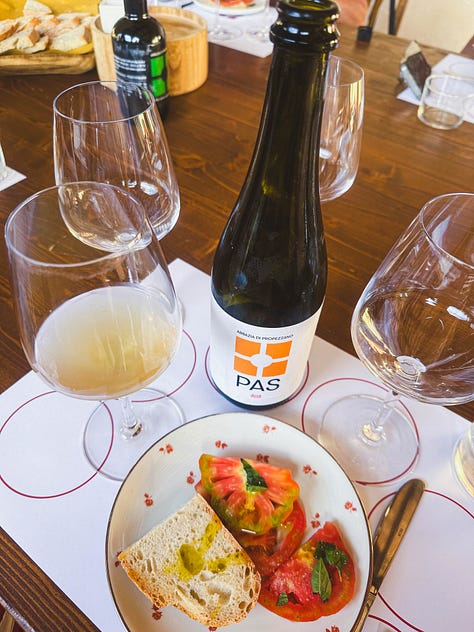
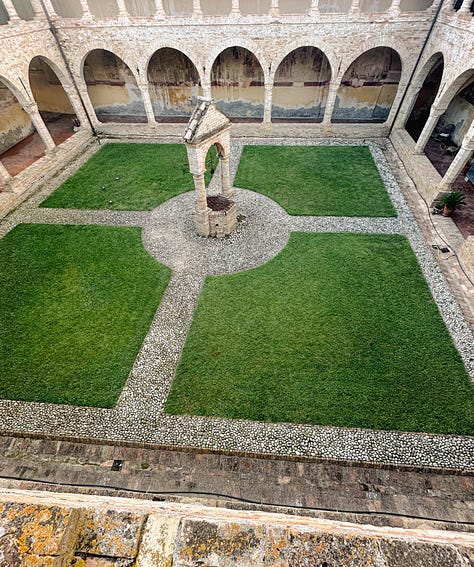
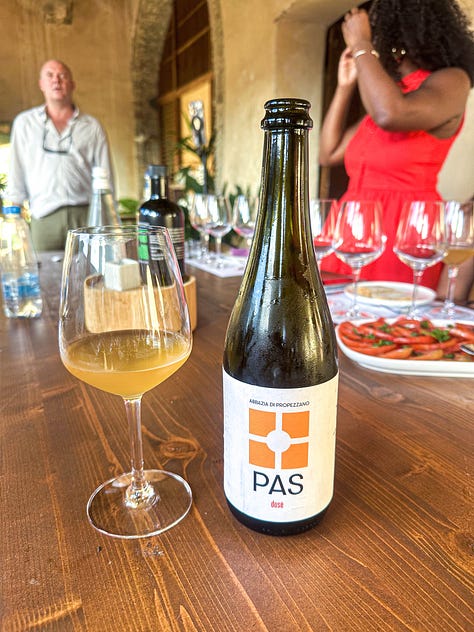
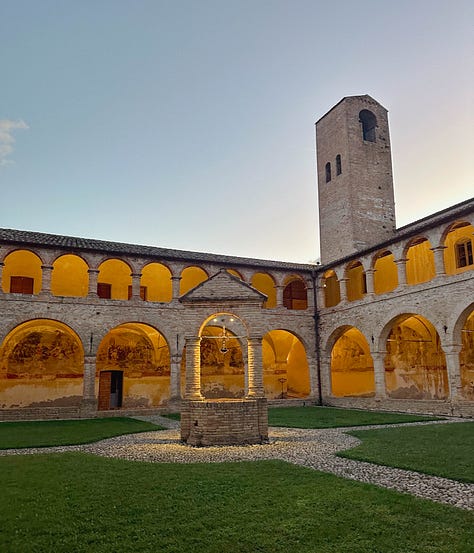
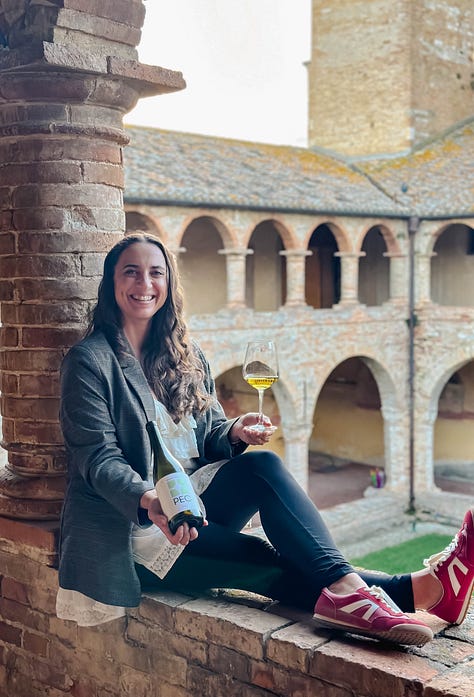
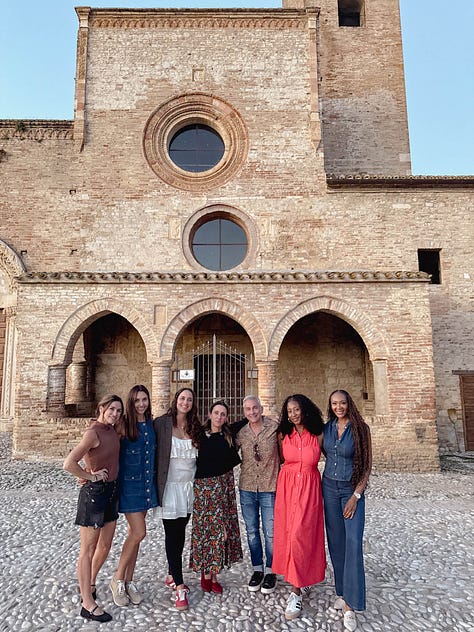
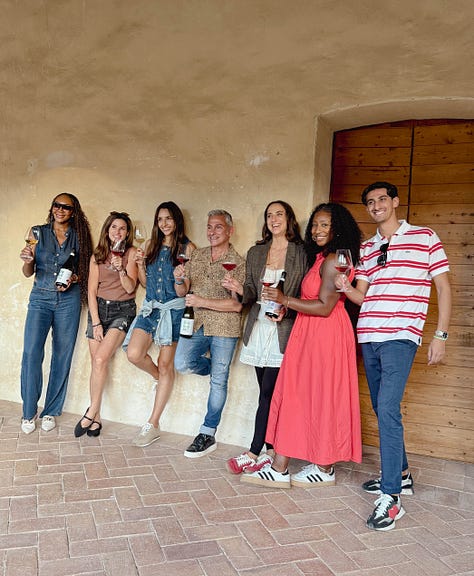
Abbazia di Propezzano has roots stretching back to the 6th century, when the abbey first began making wine. Today, it remains one of the most dedicated estates in the Colline Teramane DOCG zone. Managed by winemaker Paolo, who has had the abbey and estate in his family since the 1800s, and his partner, Cristiana, the estate includes around 16 hectares of vineyards on clay-and-chalk soils (80 hectares in total). They focus on higher vine density (3,300 vines per hectare), limited yield, and all work from vinification to bottling done inside the designated production zone in Teramo. Their wines are all so fresh, vibrant, and alive, including a Pas Dosé Passerina Pet Nat, Pecorino, Trebbiano, Cerasuolo, and Montepulciano. The space they’ve created within the abbey to welcome guests is absolutely charming and such a unique tasting experience accompanied by local bites all thoughtfully presented by Cristiana. They’ll soon have rooms open for guests who wish to stay the night, too!
I hope you enjoyed this lengthy round up of our week exploring this picturesque region with Vini d’Abruzzo!
I saved all of the places we visited in this Google Maps list in case you want to reference it for your trip to the region!
Stay tuned next week for a closer look at the native grapes of Abruzzo. Paid subscribers will also get the inside scoop on my favorite wines for each variety that you absolutely have to try!



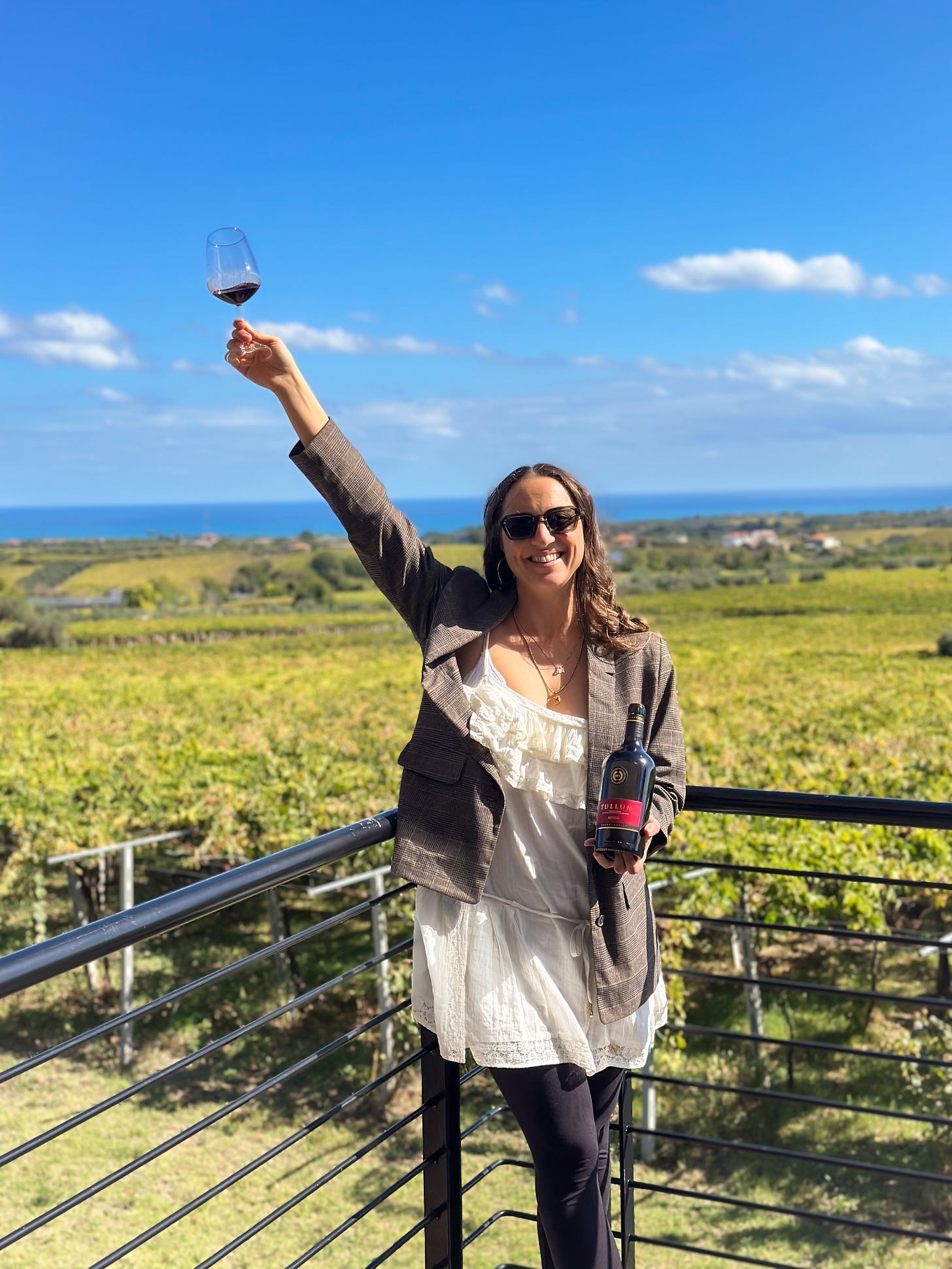
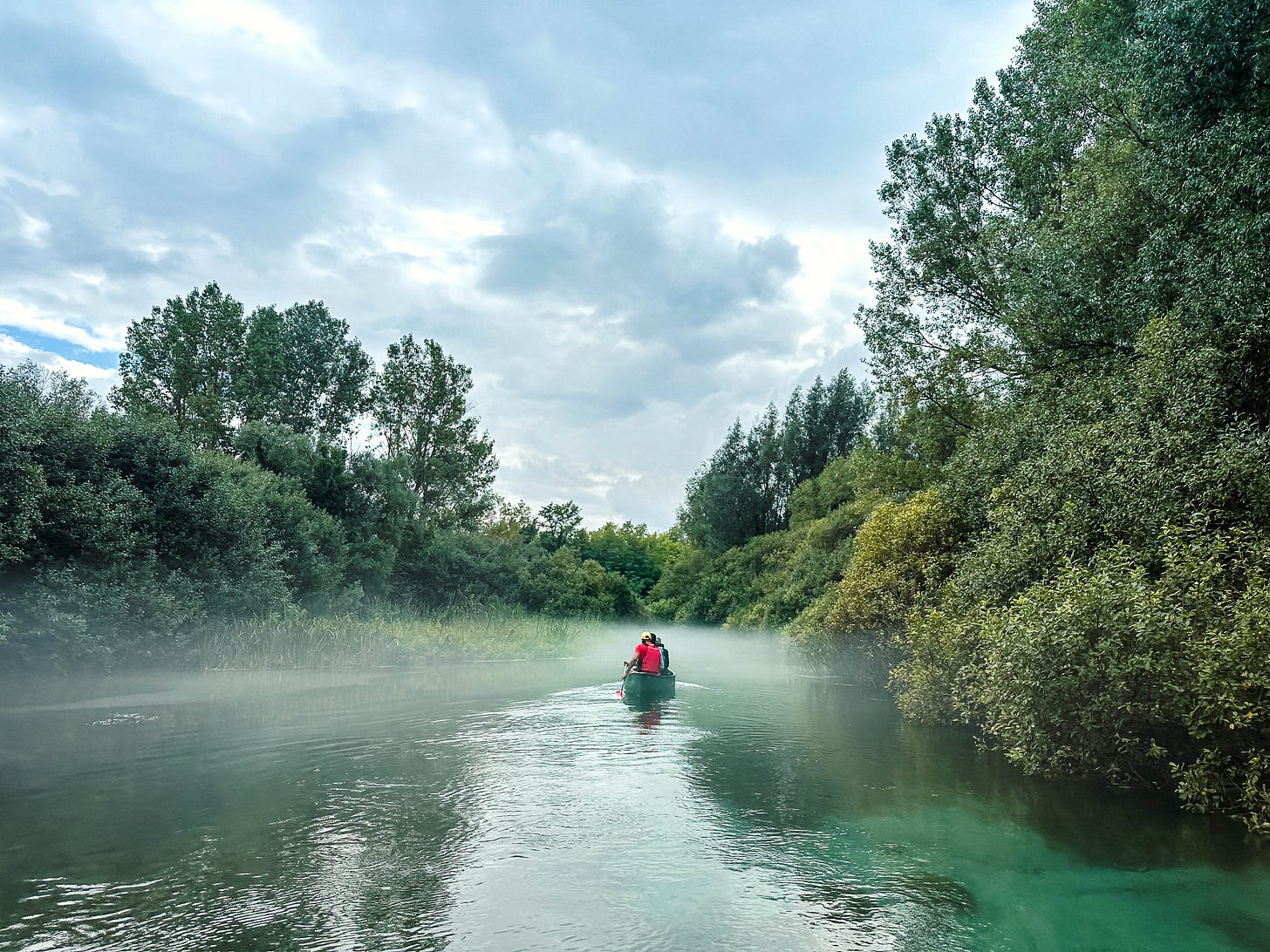
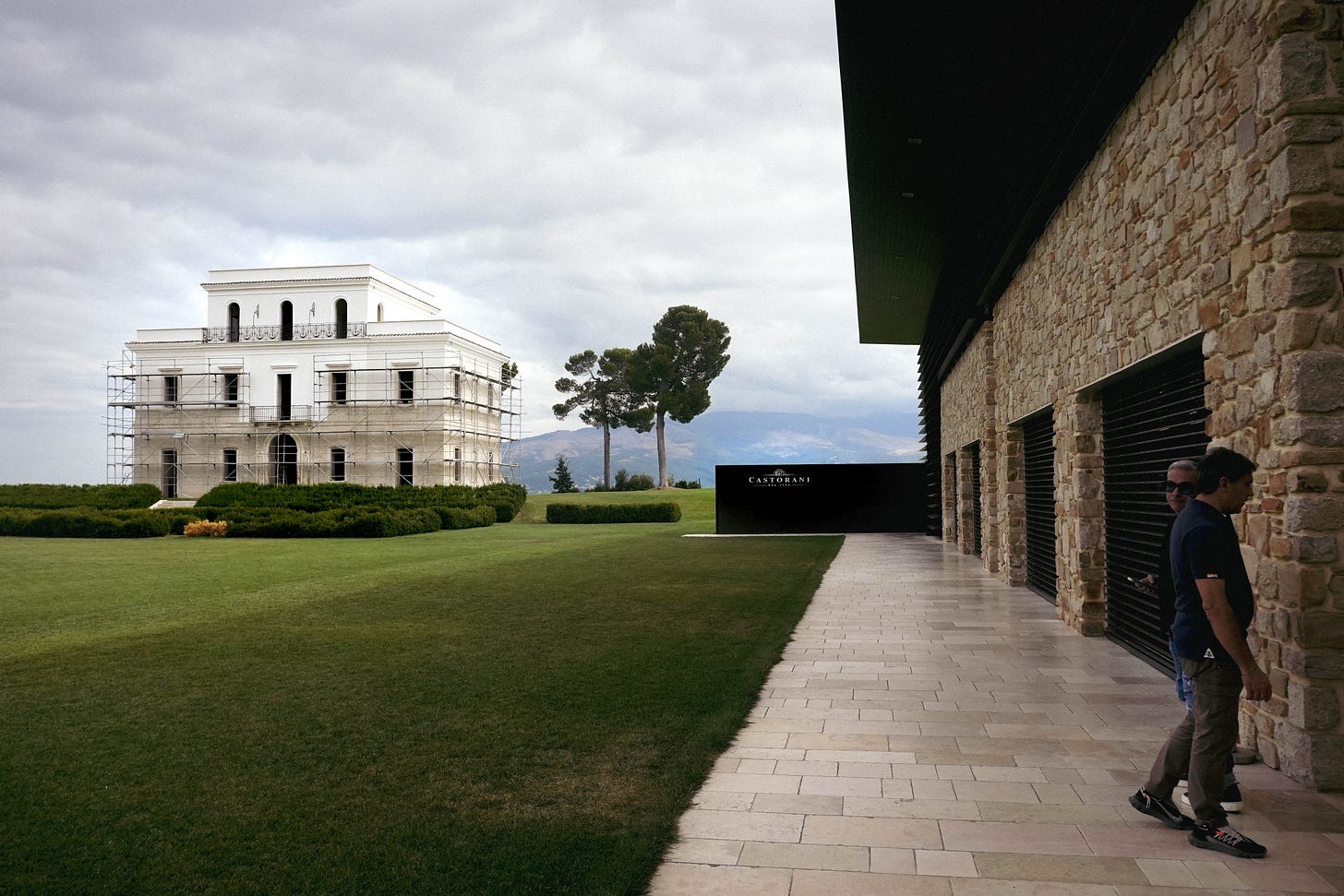
This is wonderful, thank you for sharing!
Wow, that looked incredible! And also a bit exhausting 😂
It's been well over a decade since I was last in Abruzzo... You've definitely inspired me to go back!